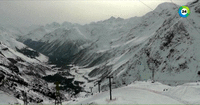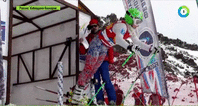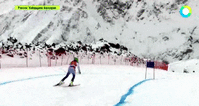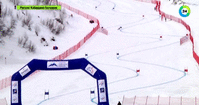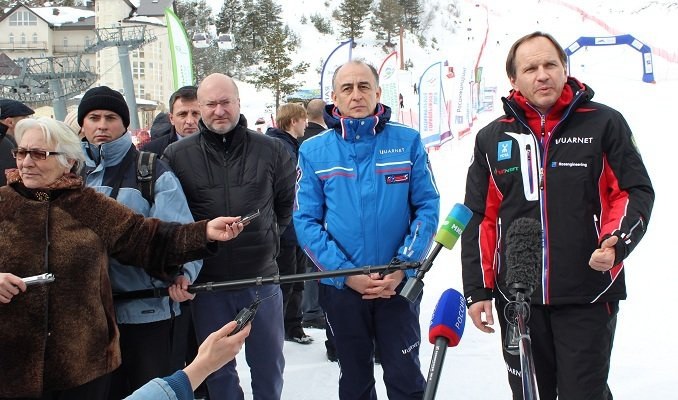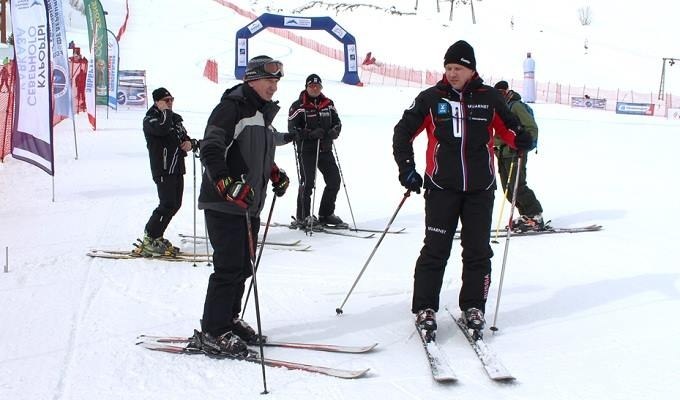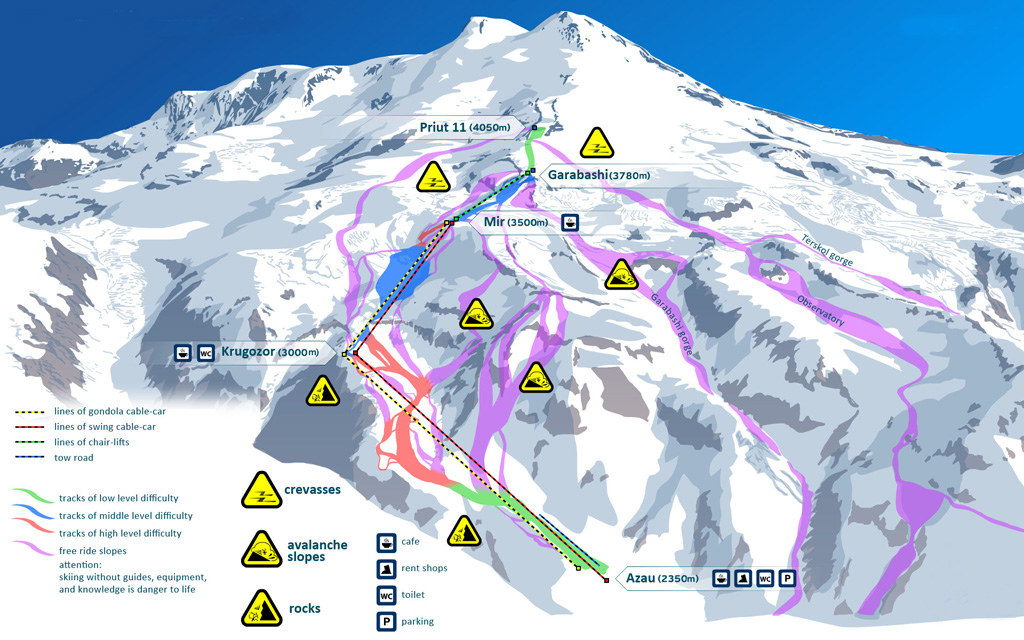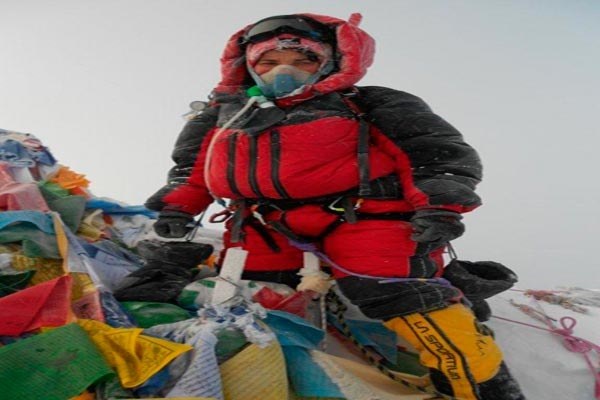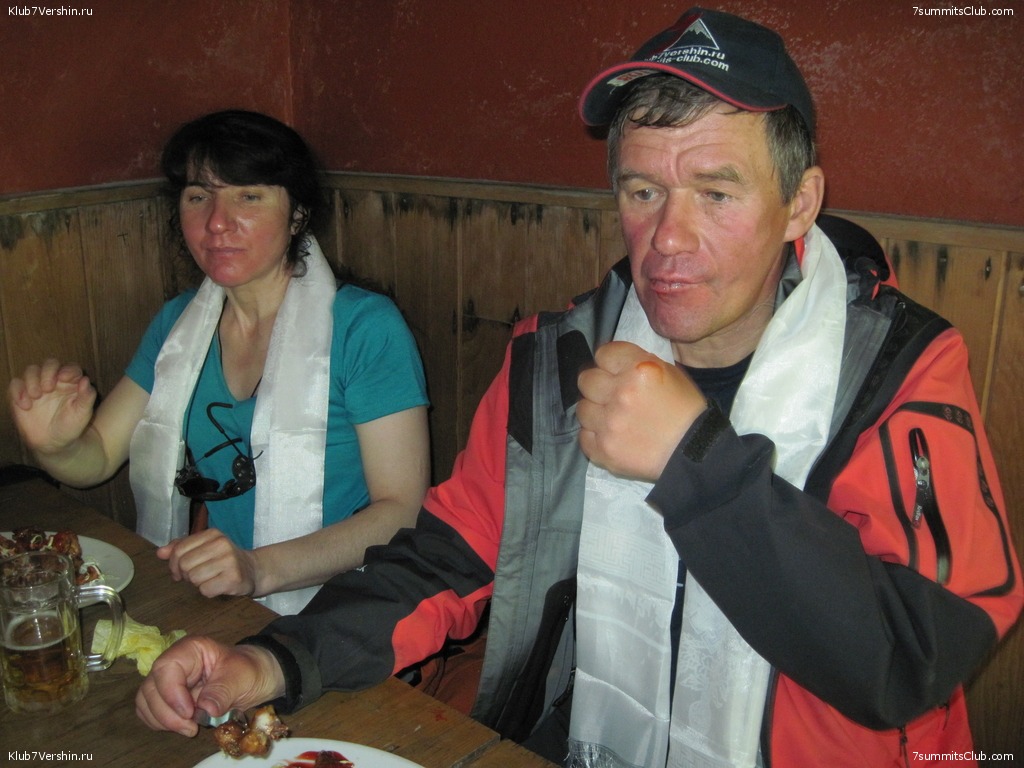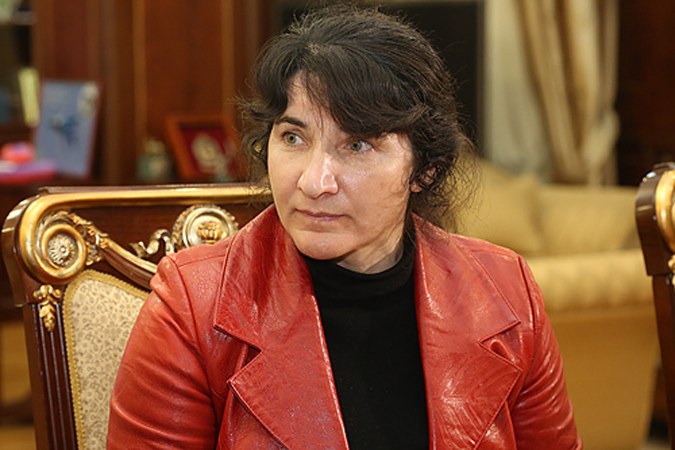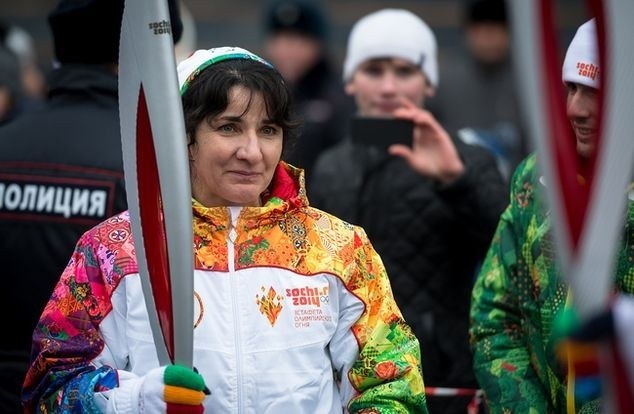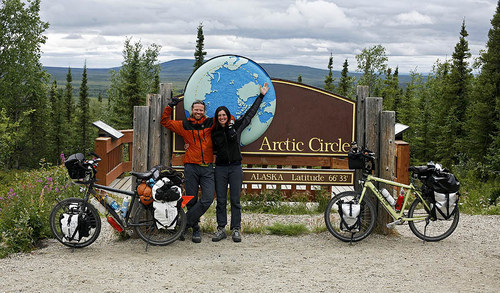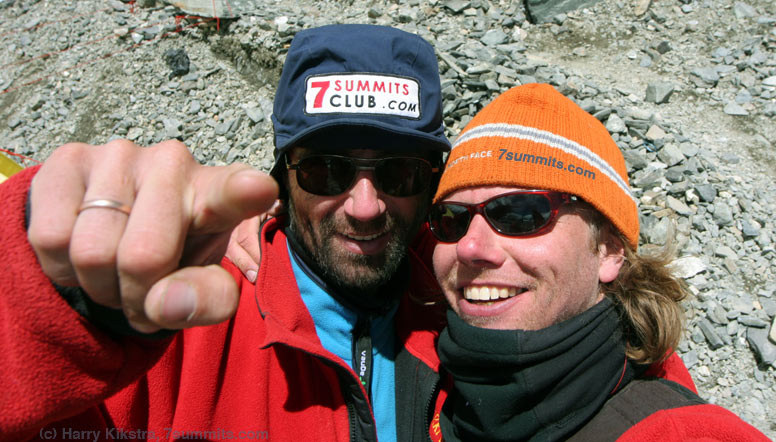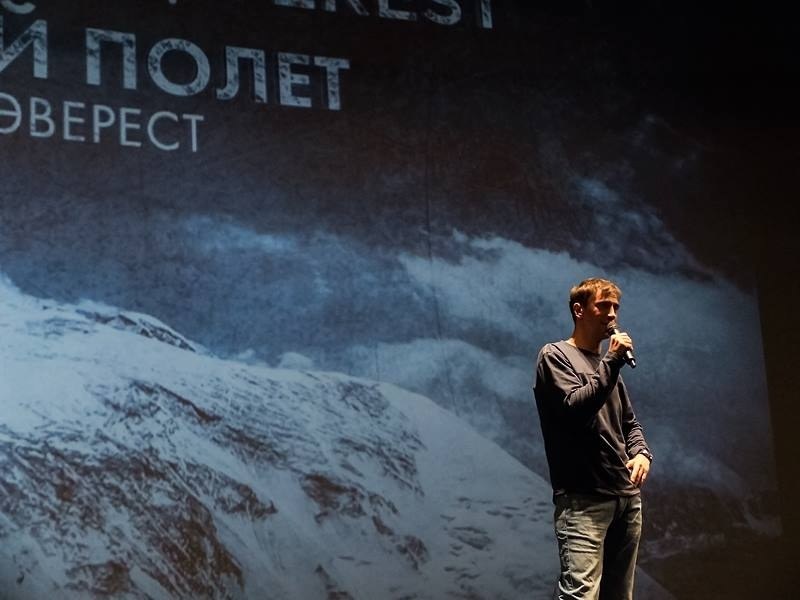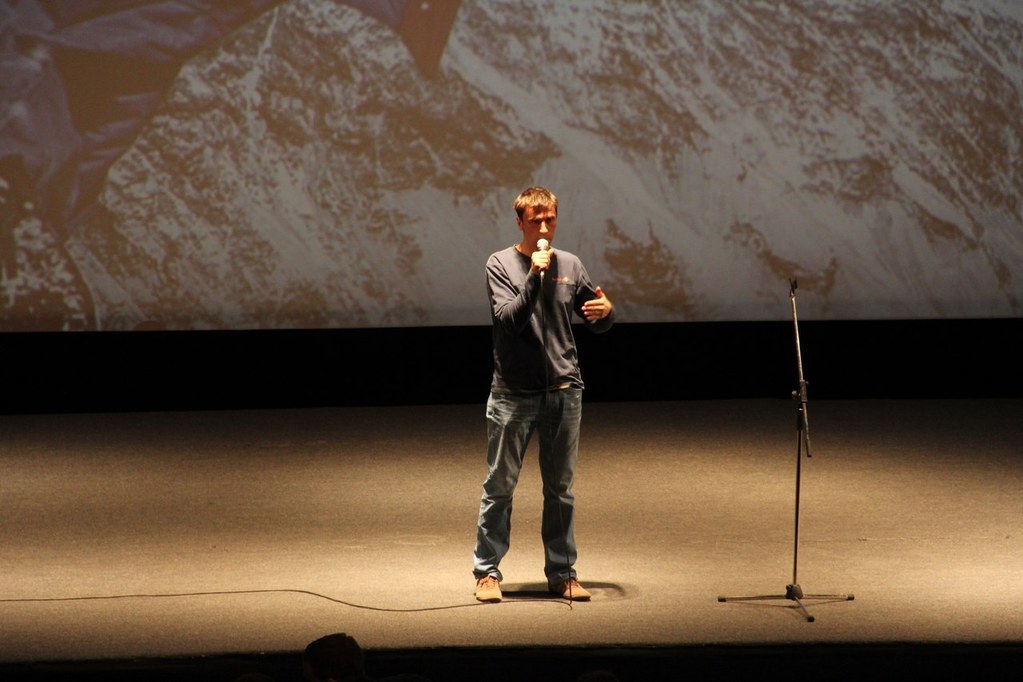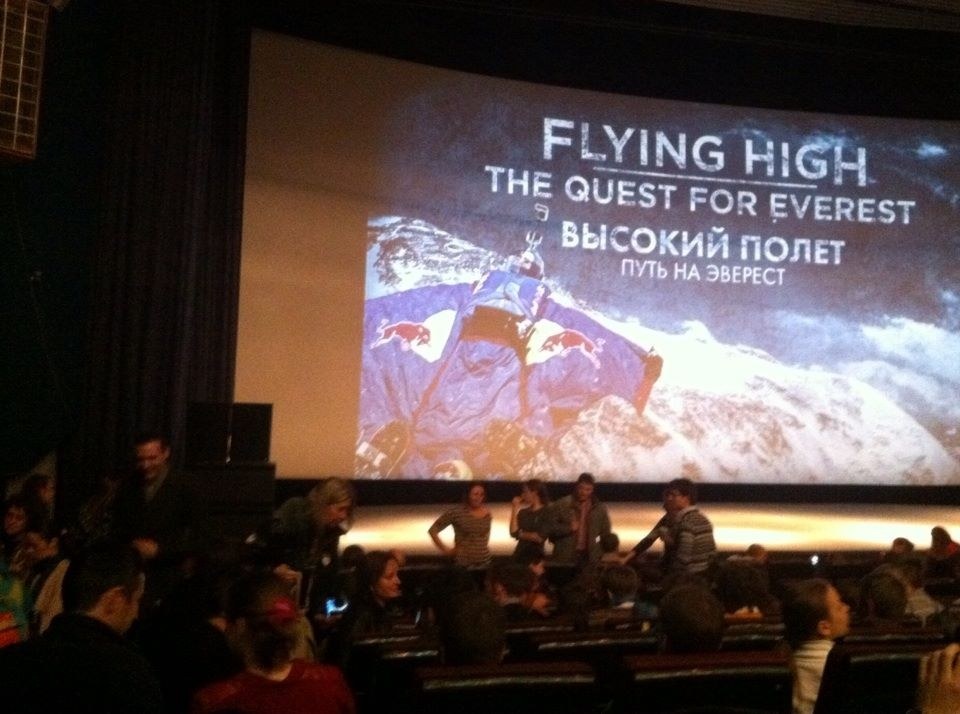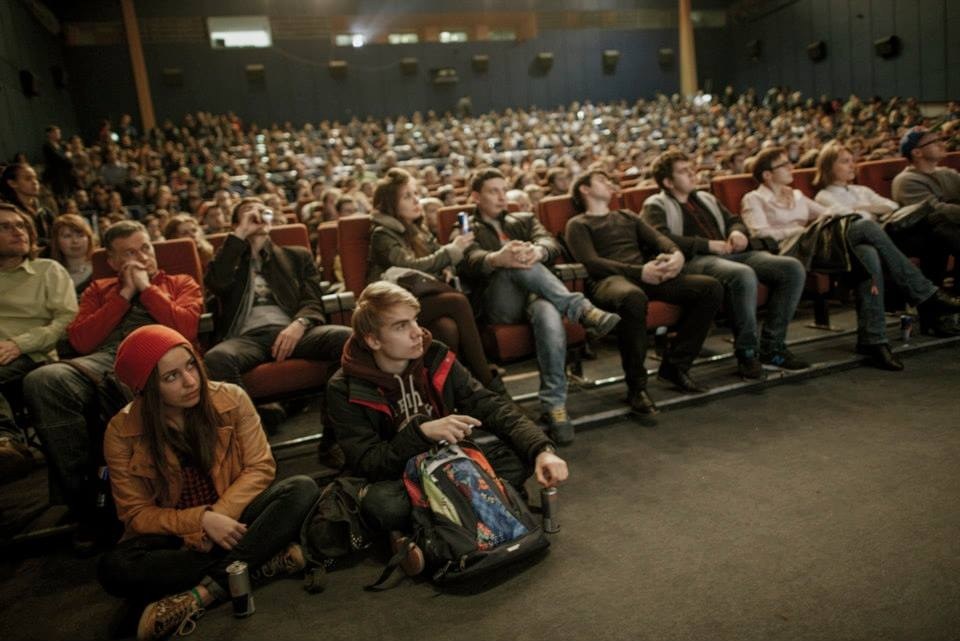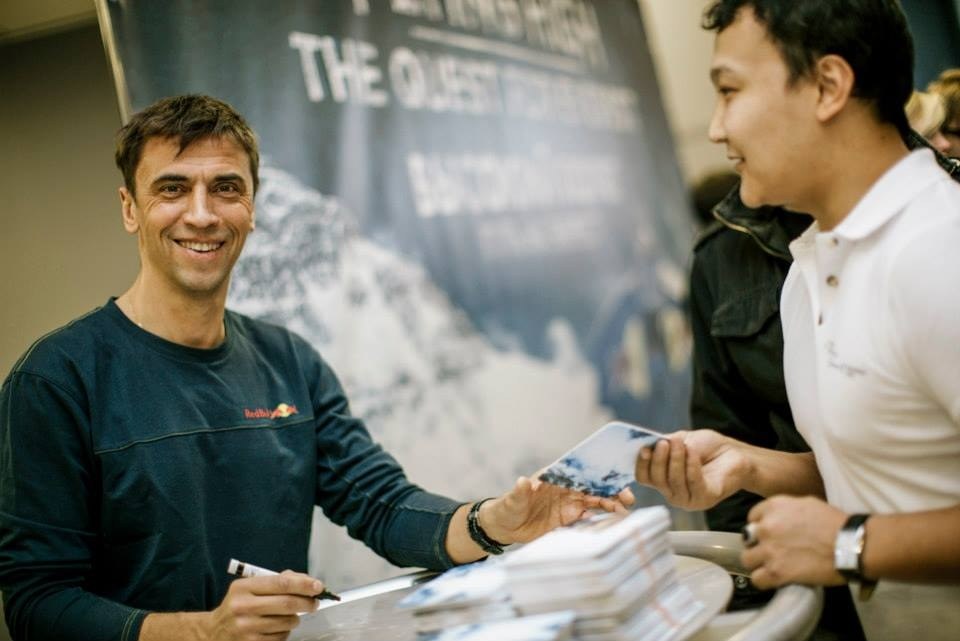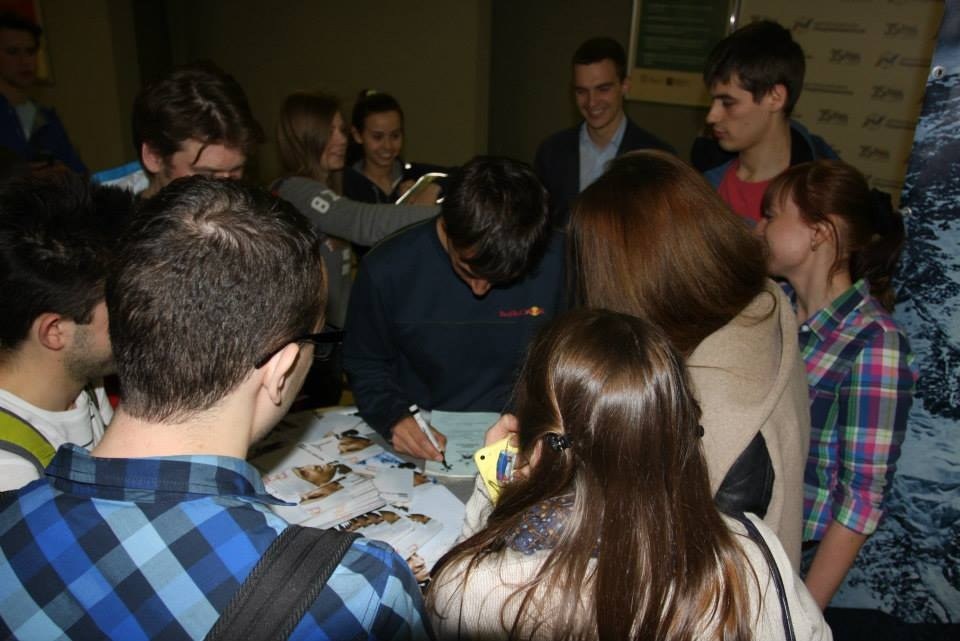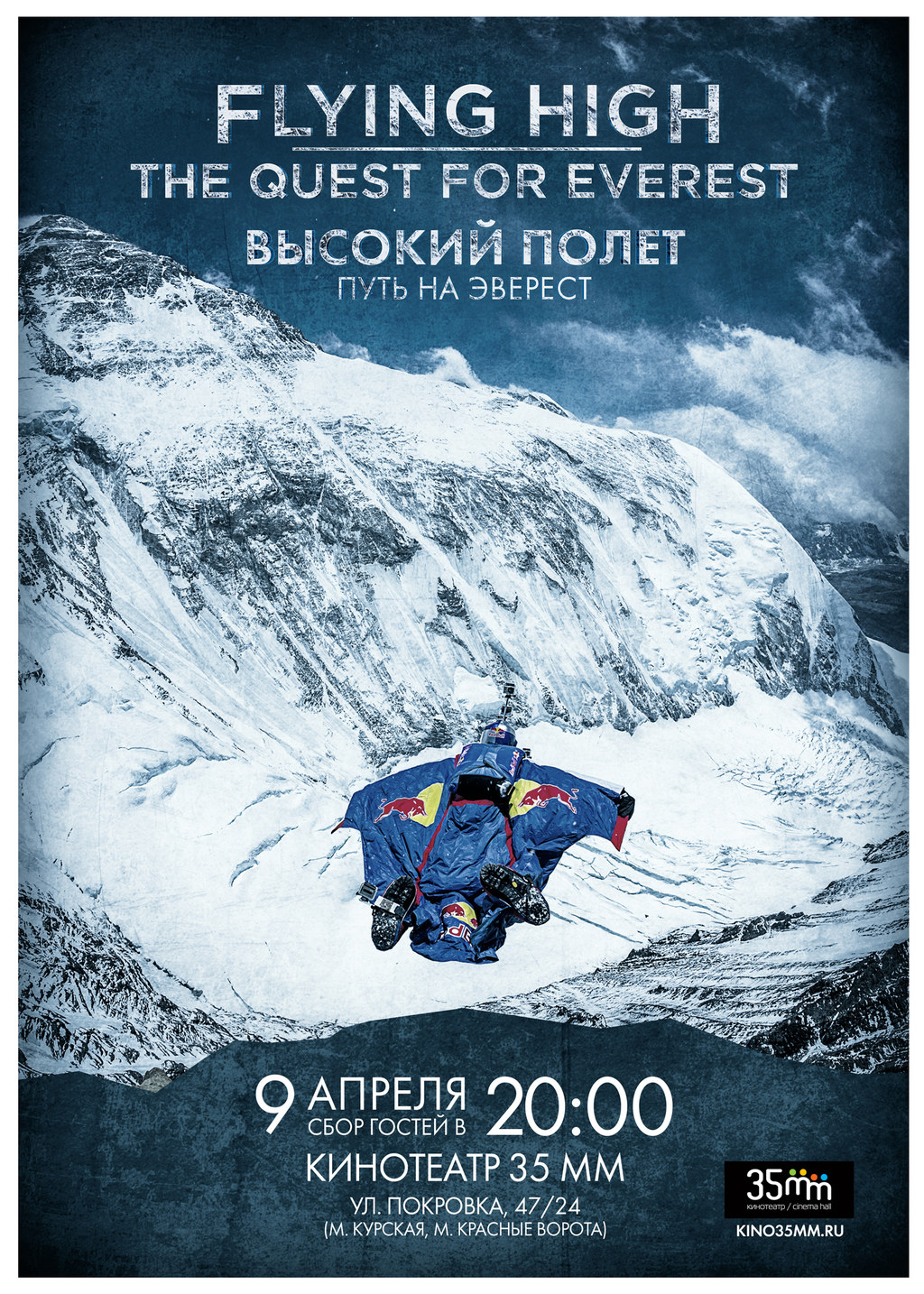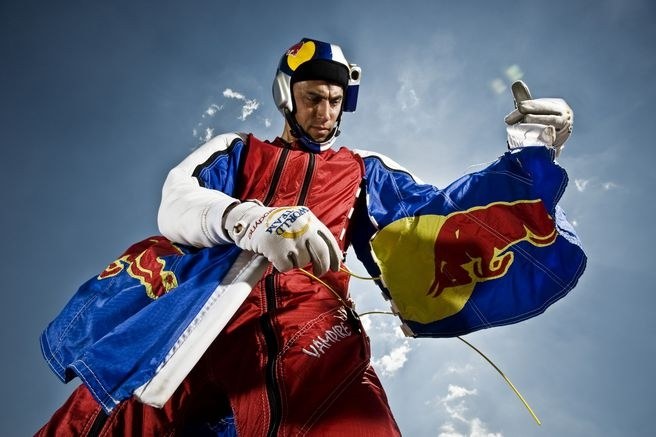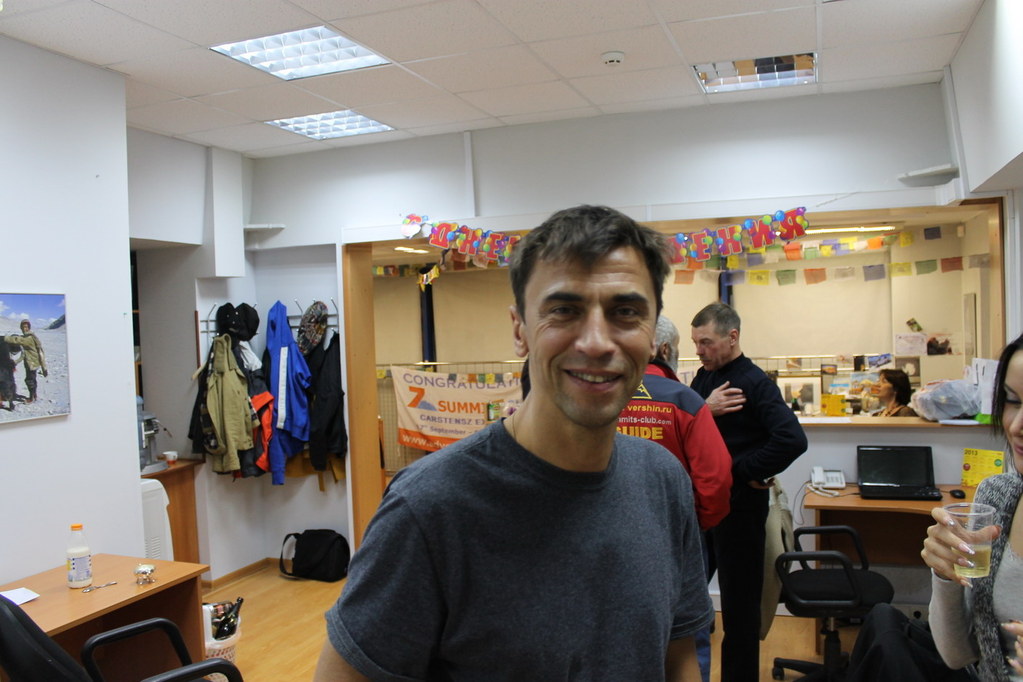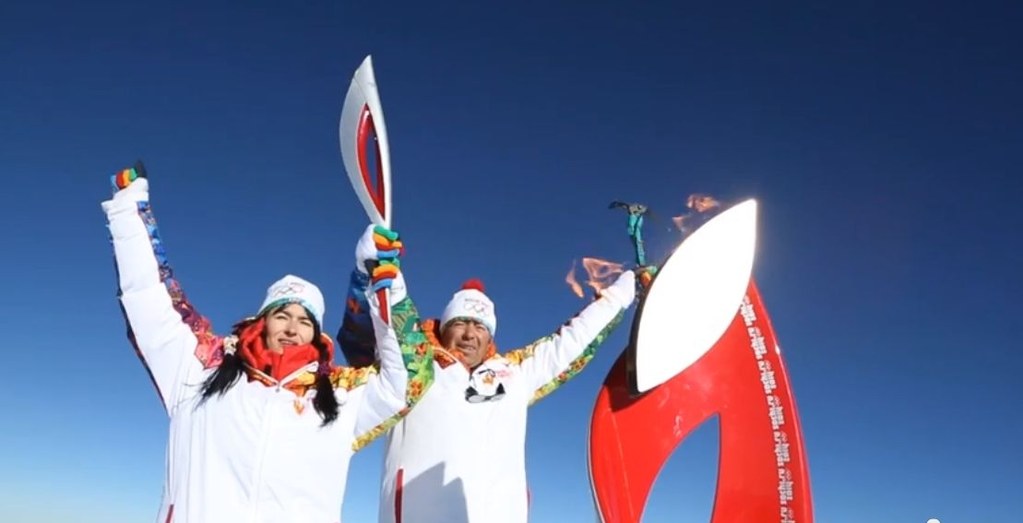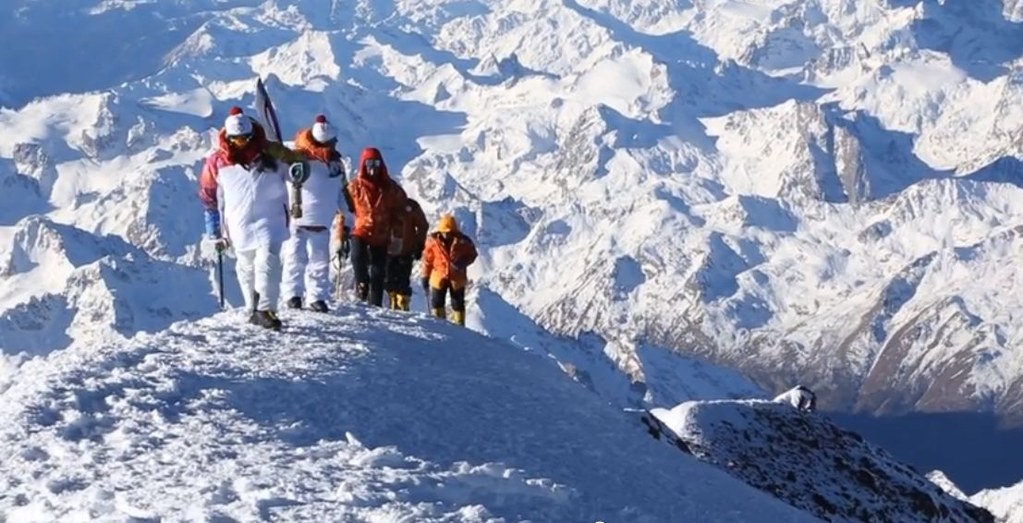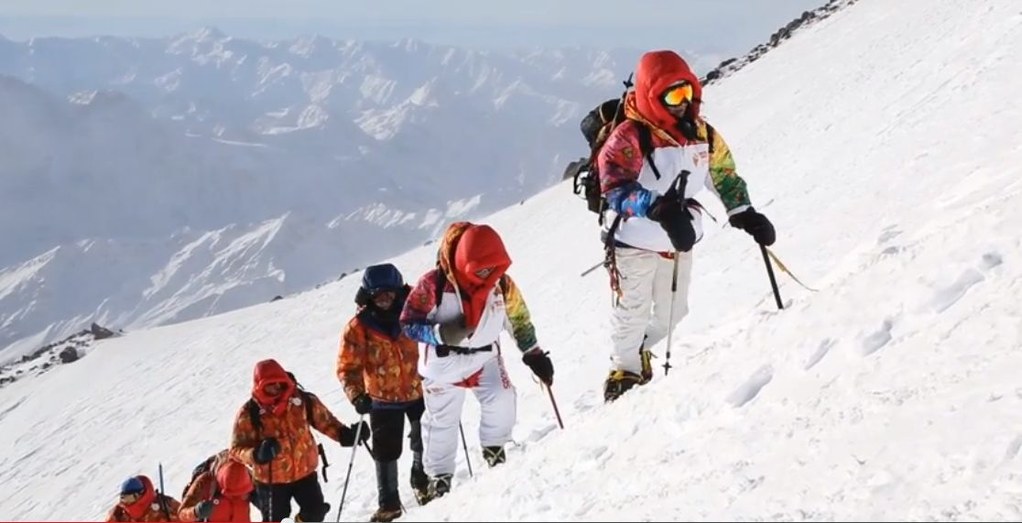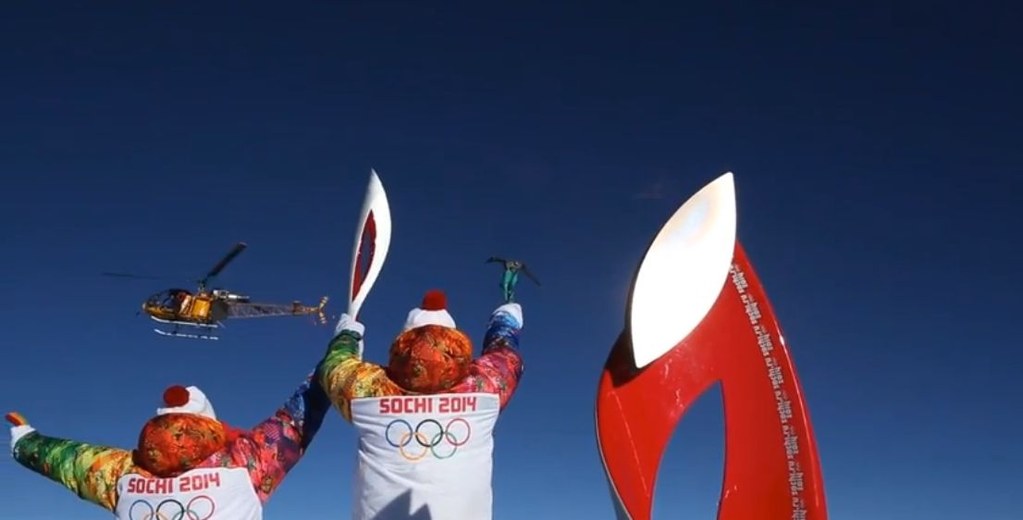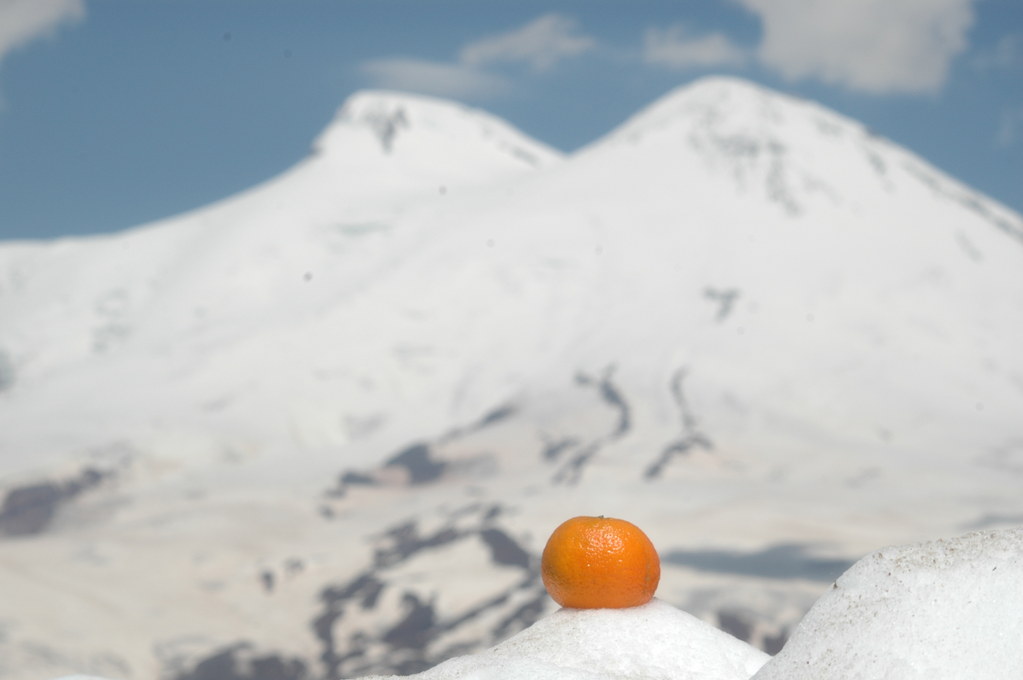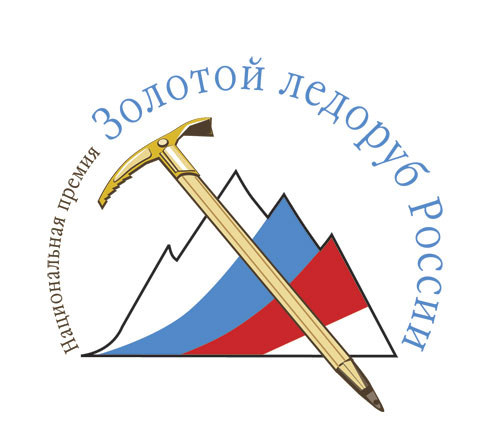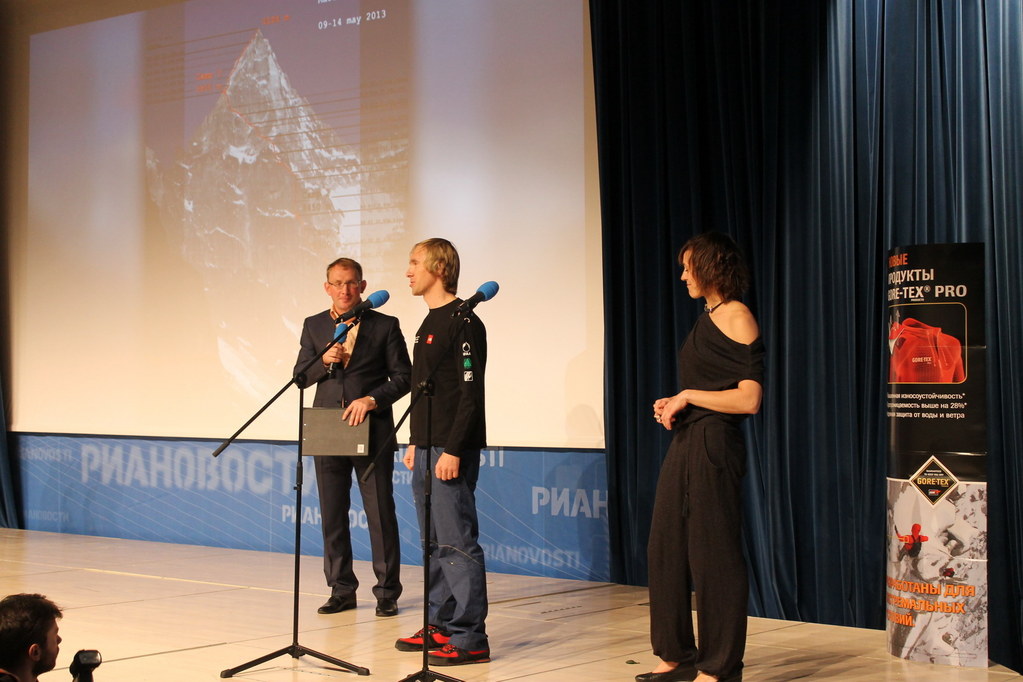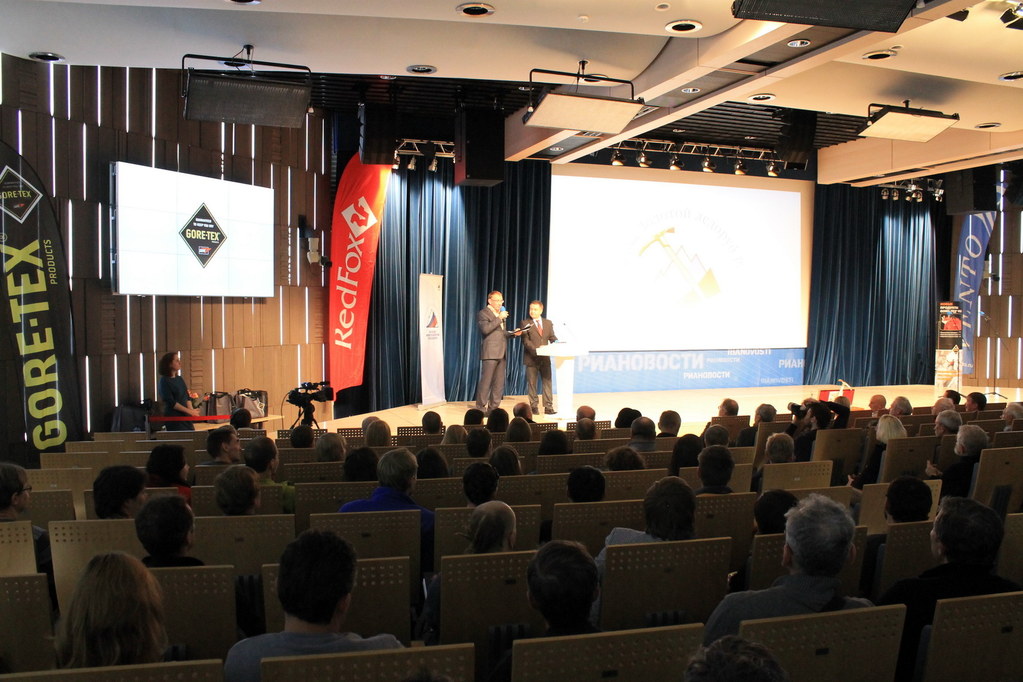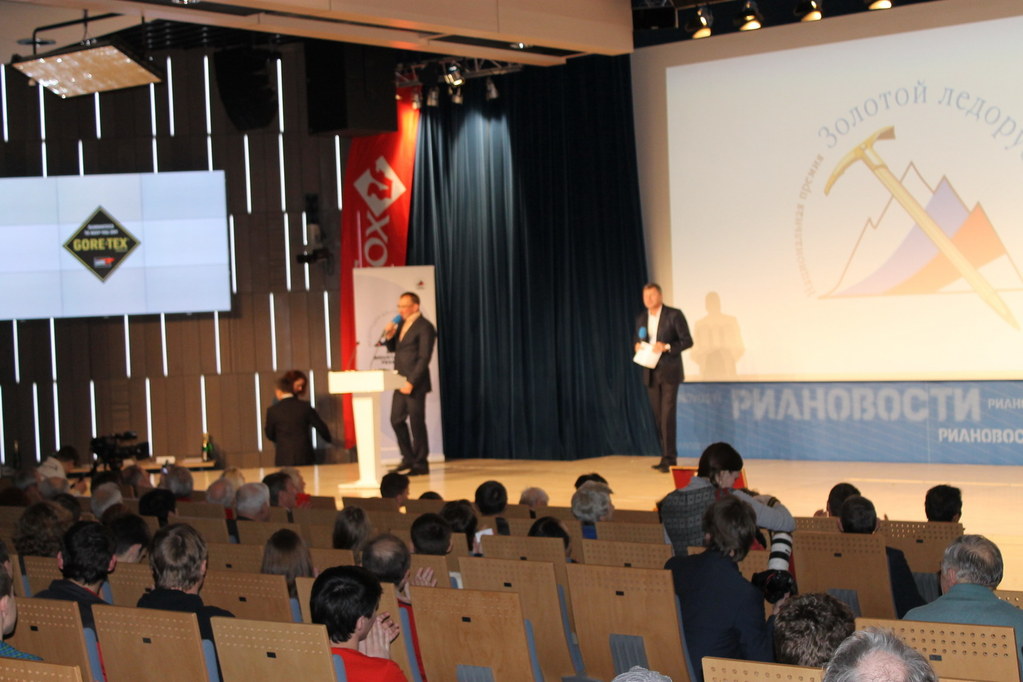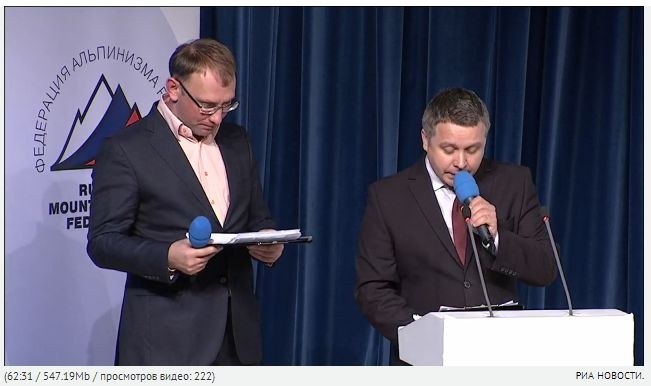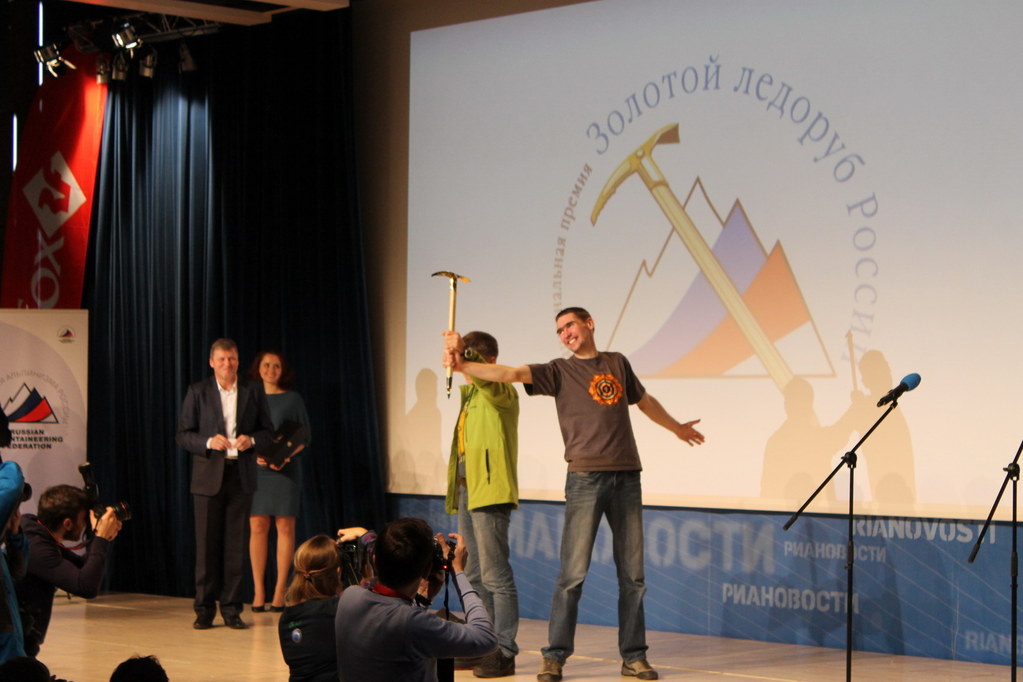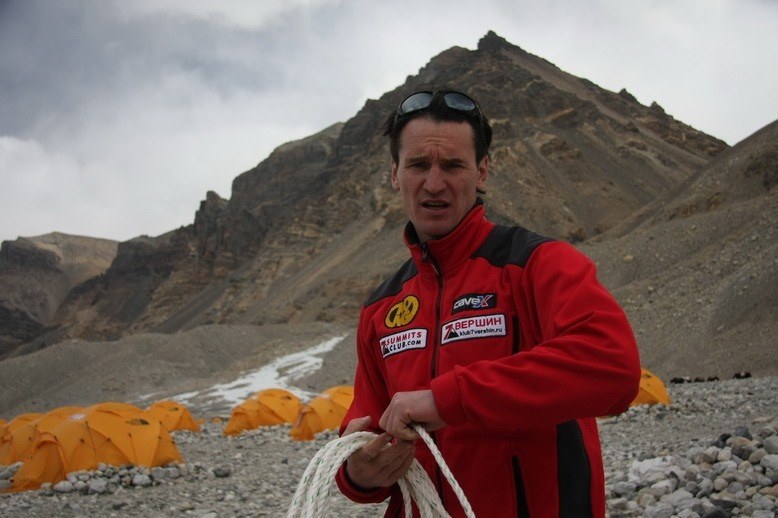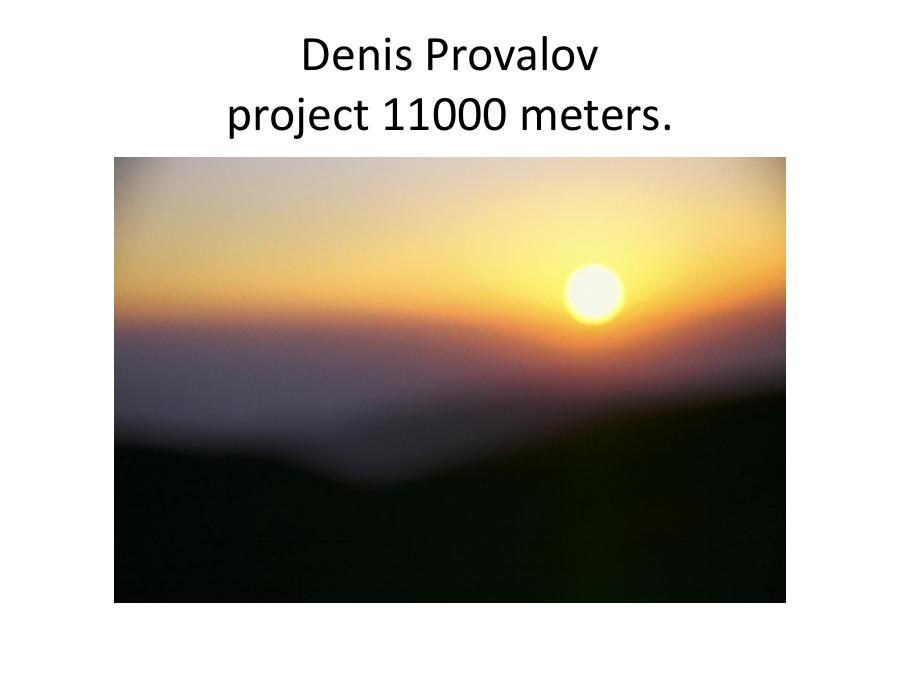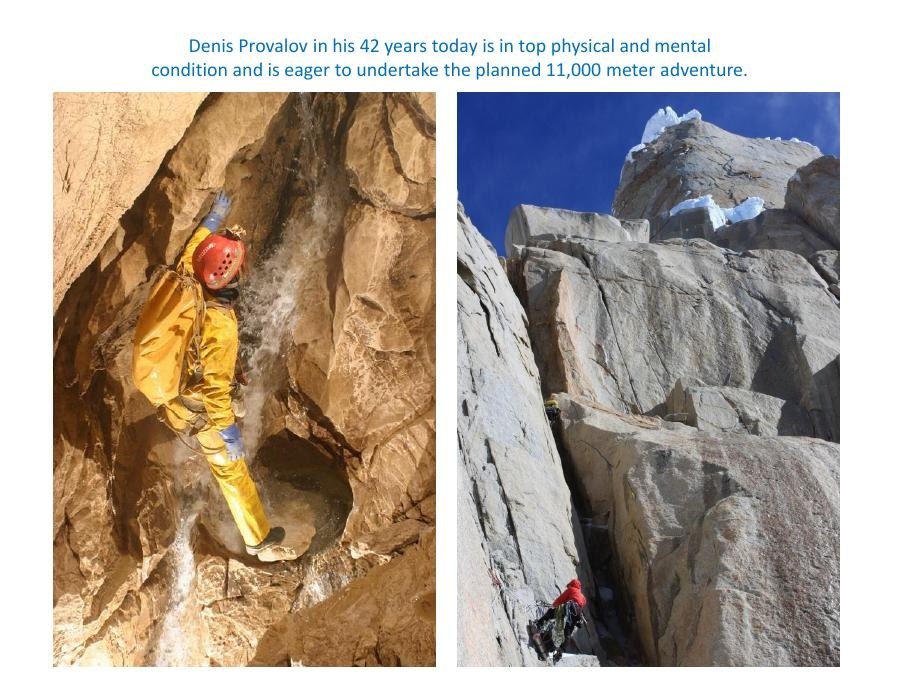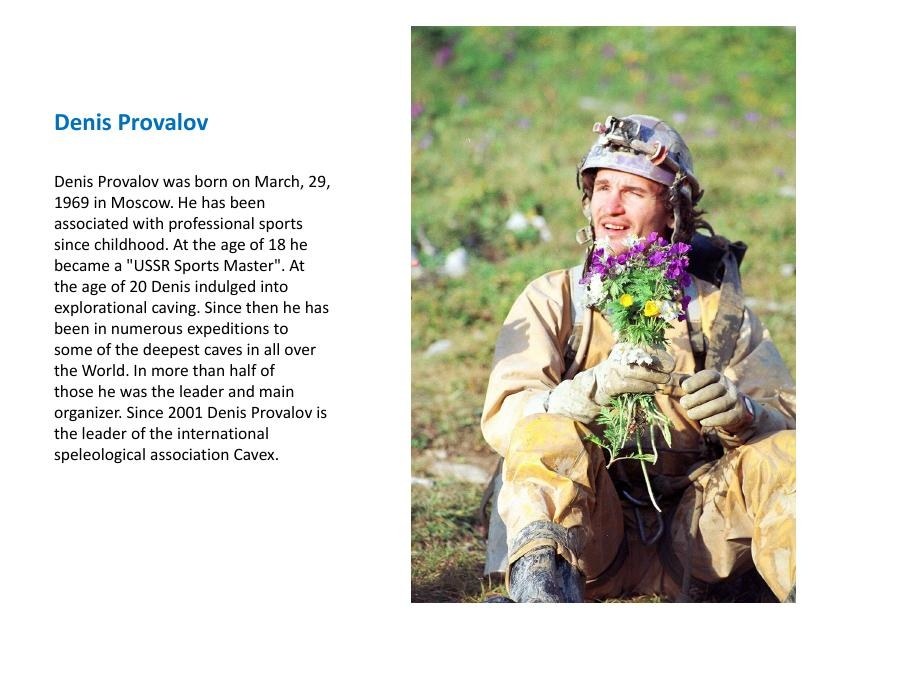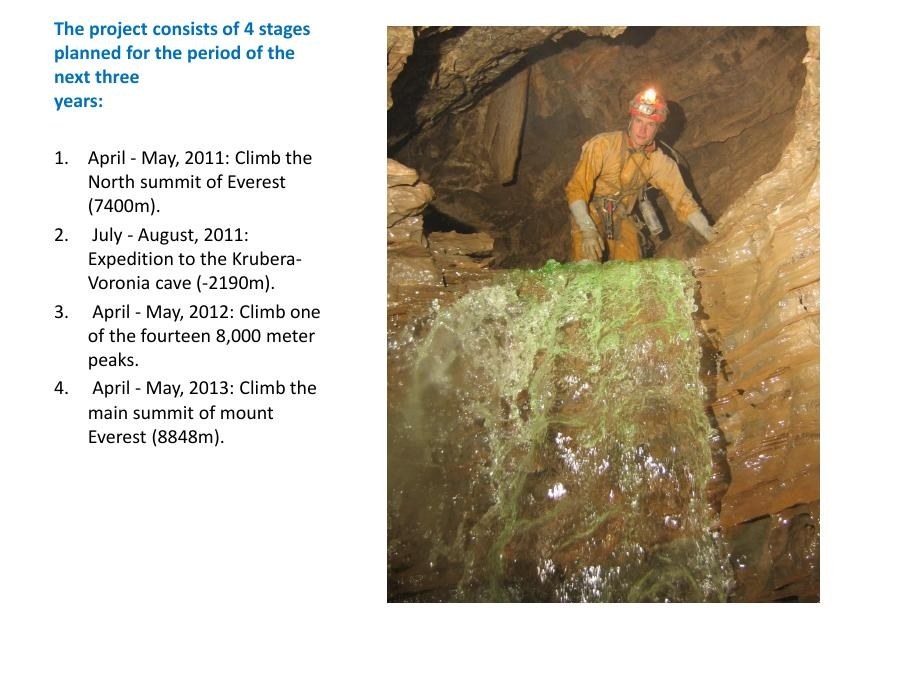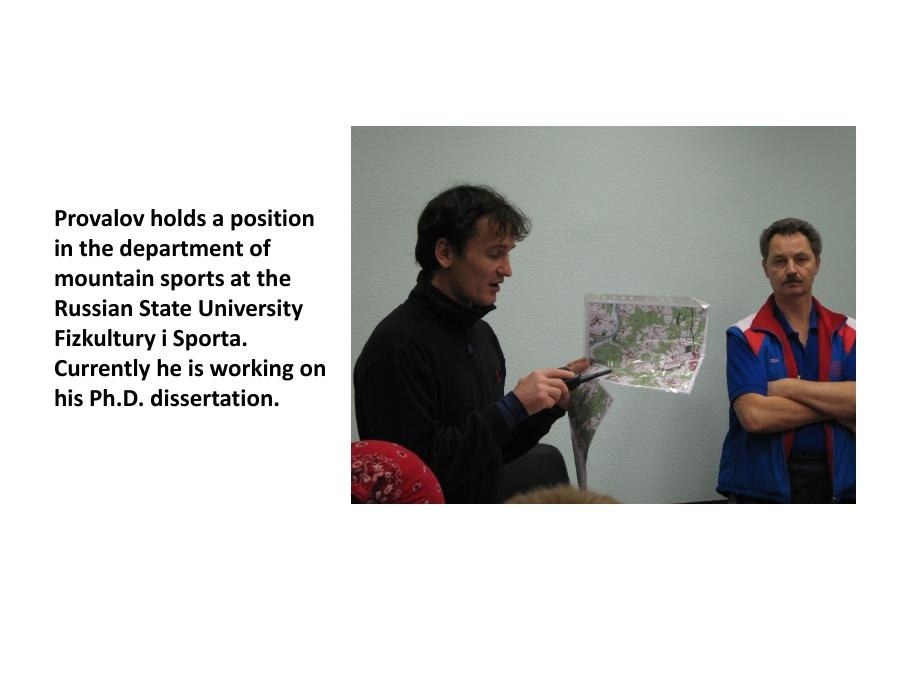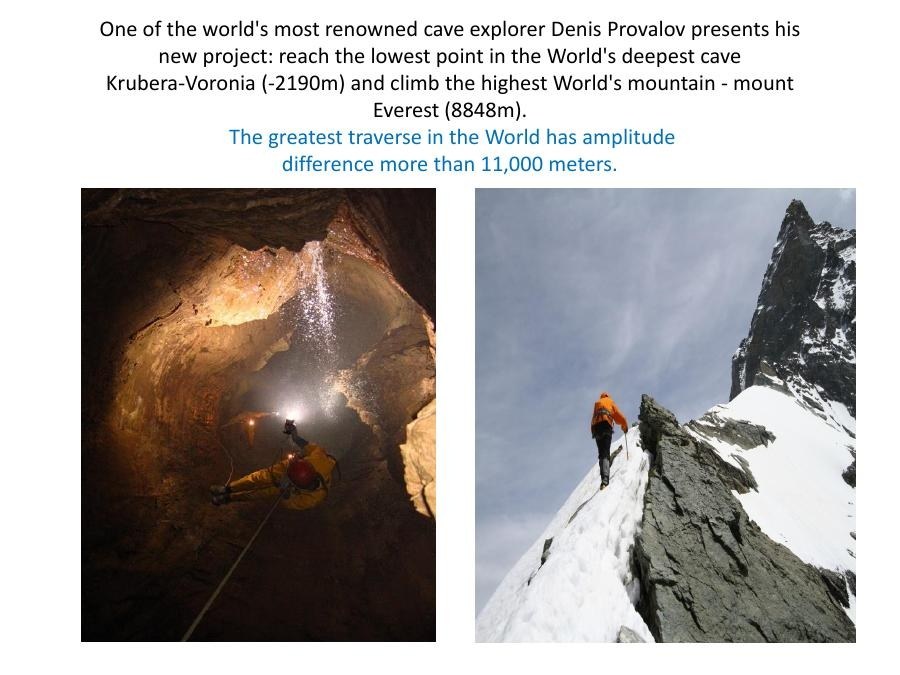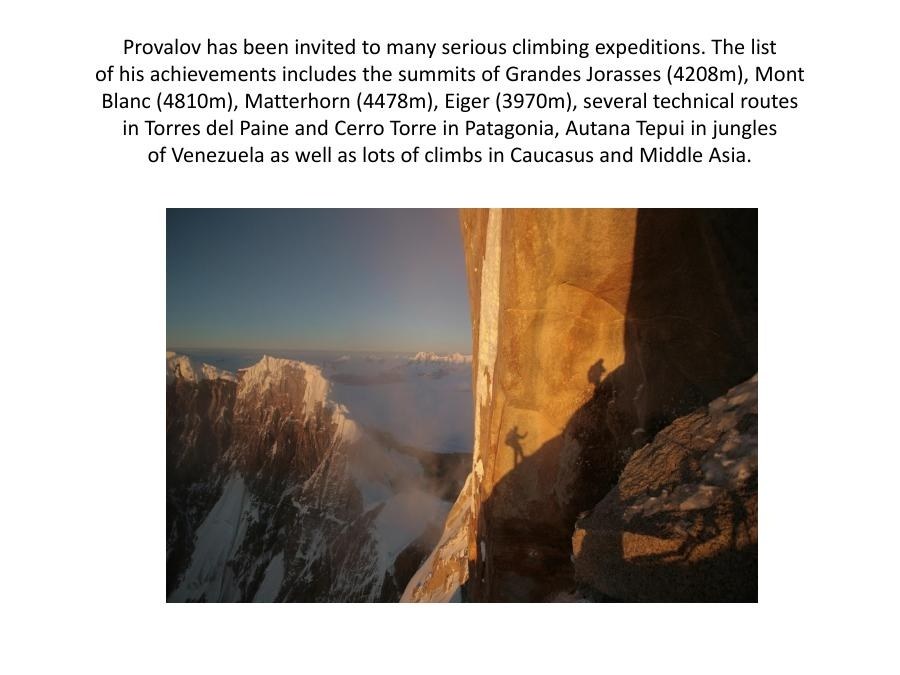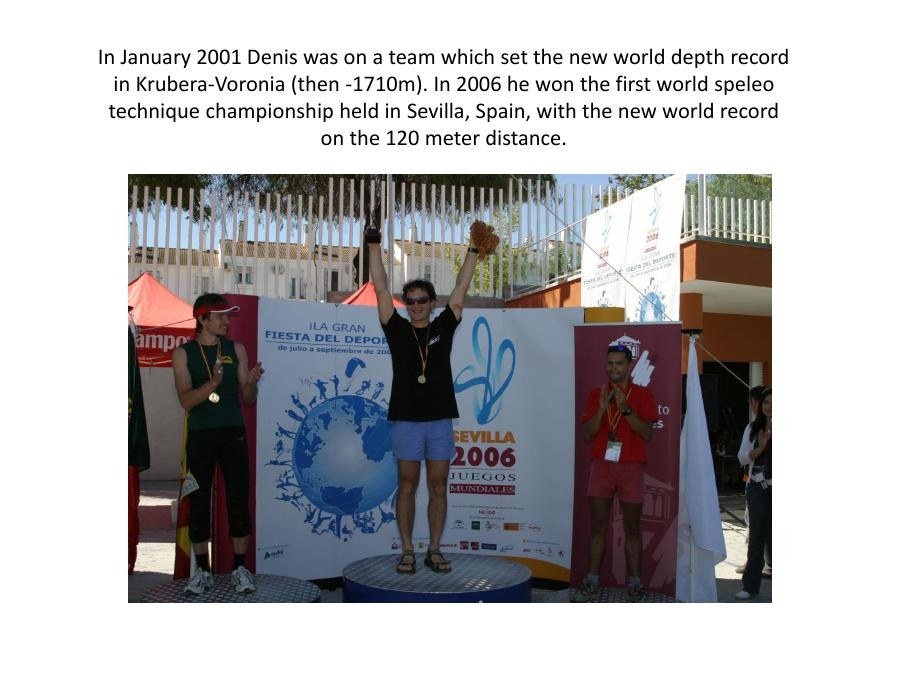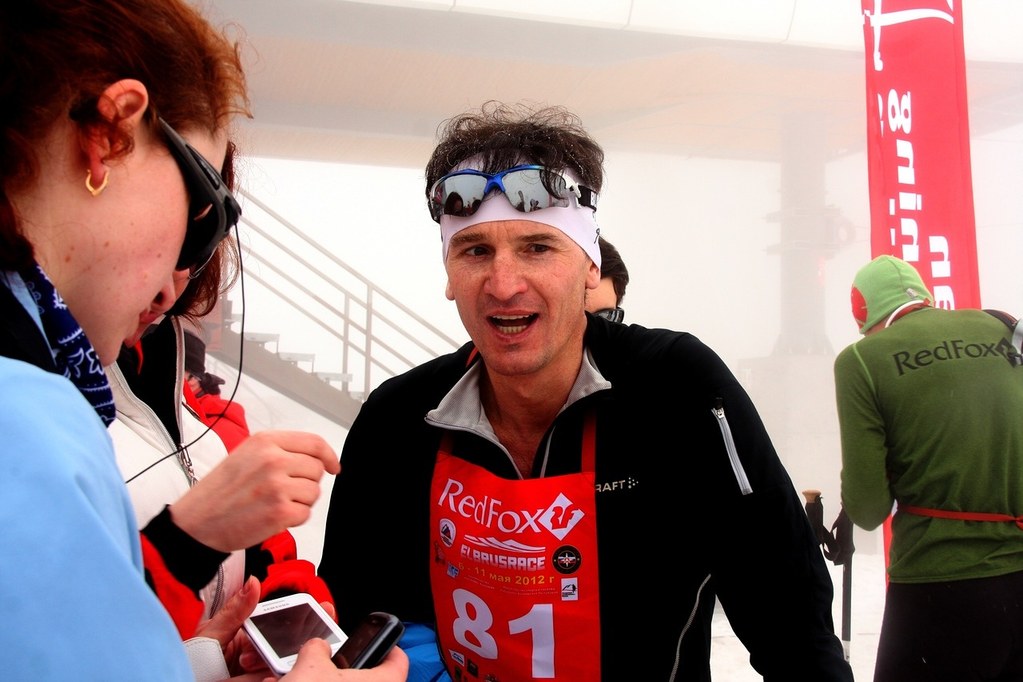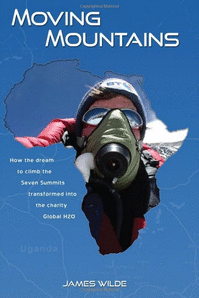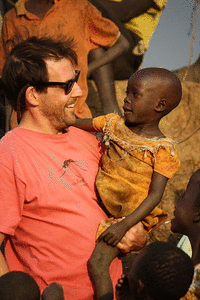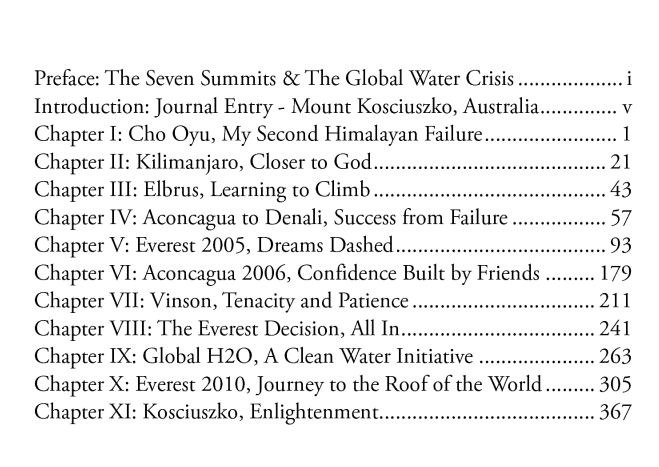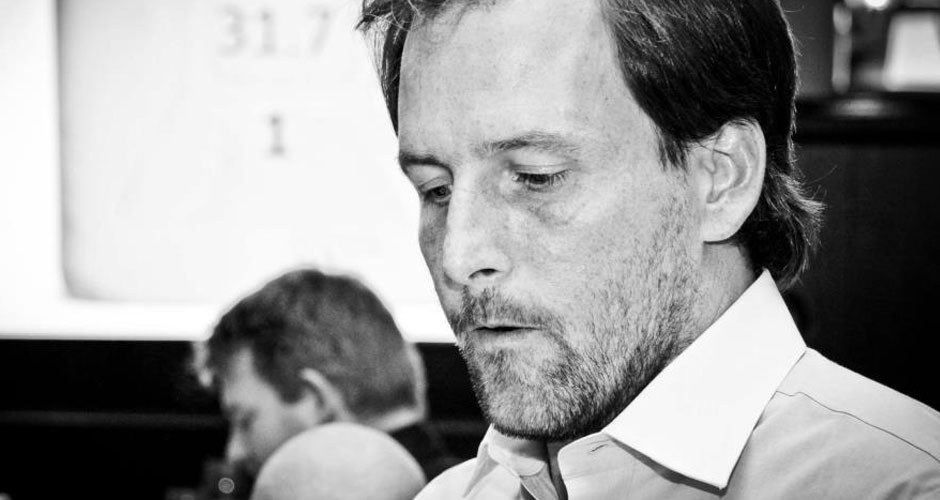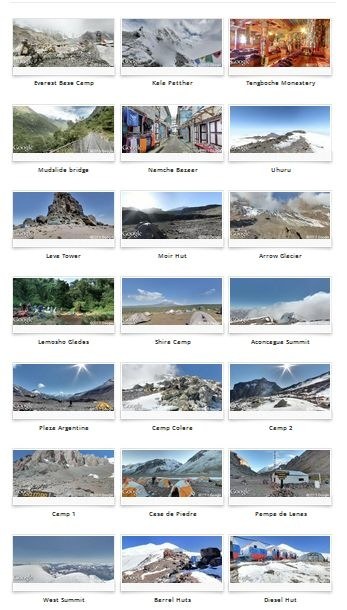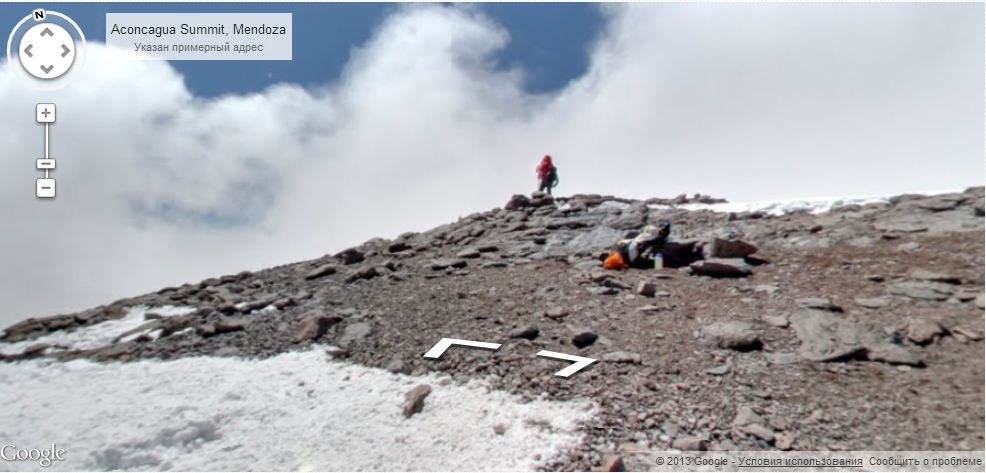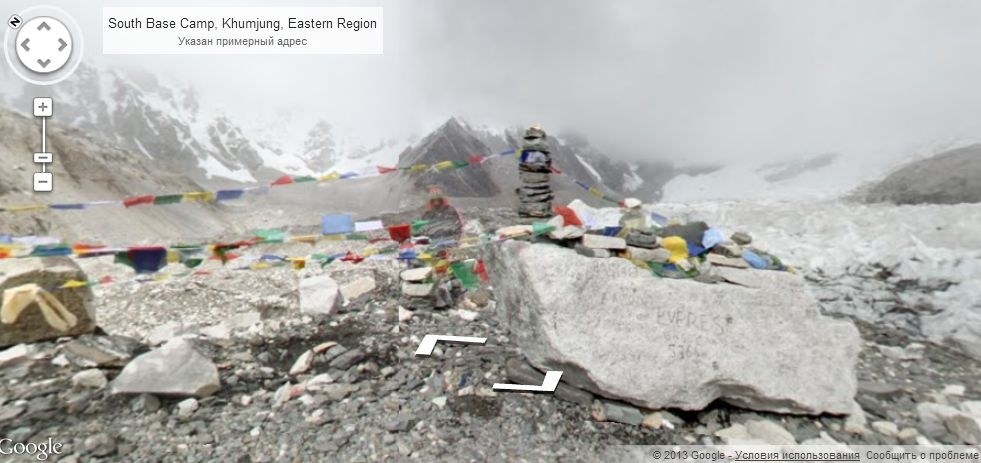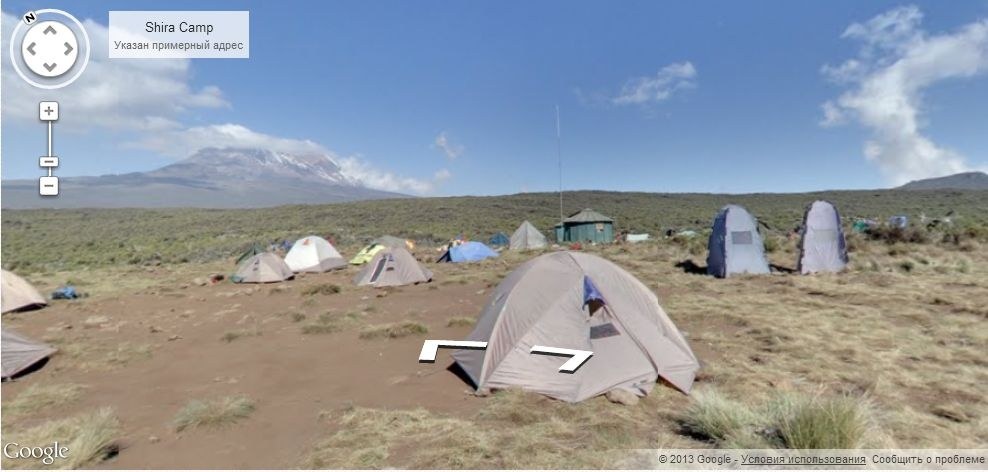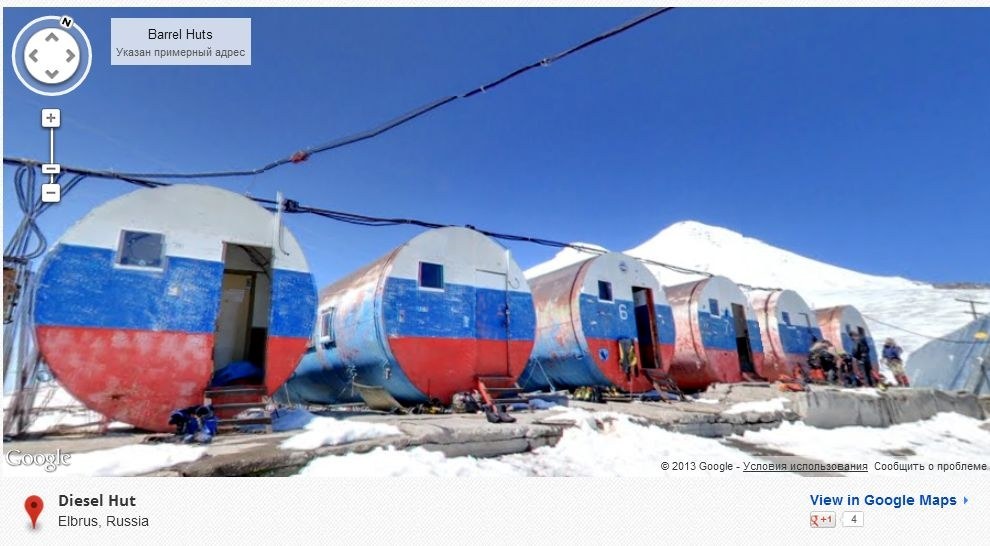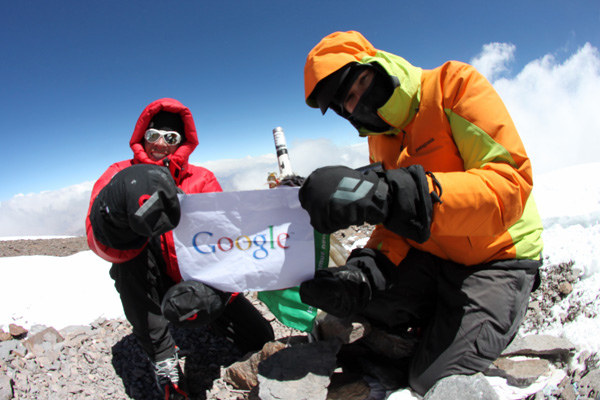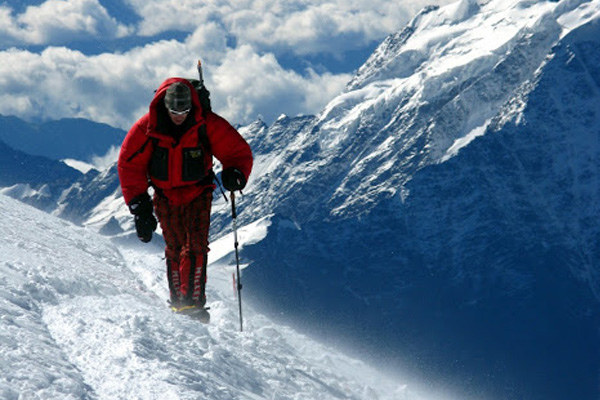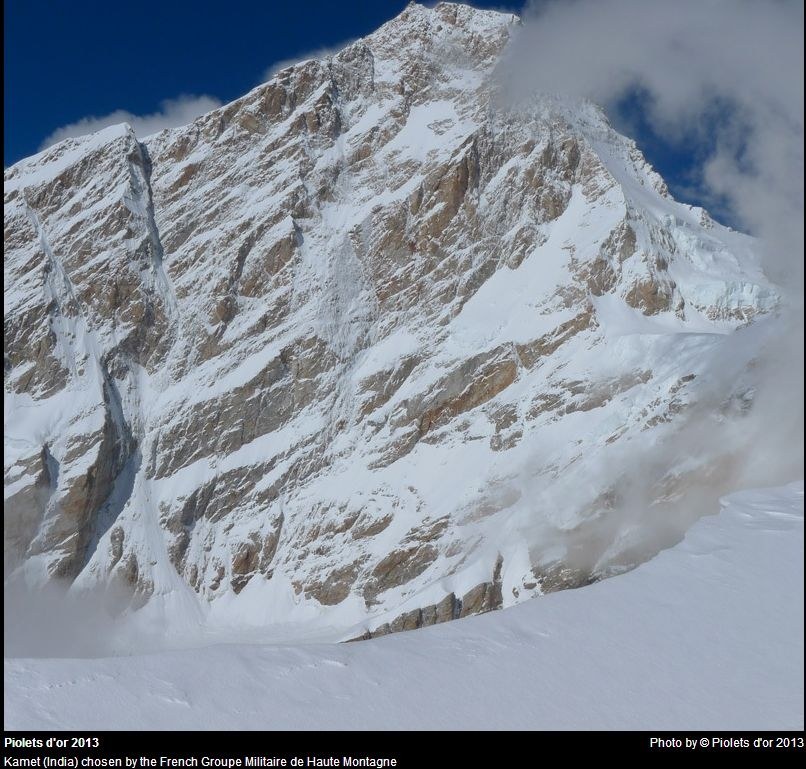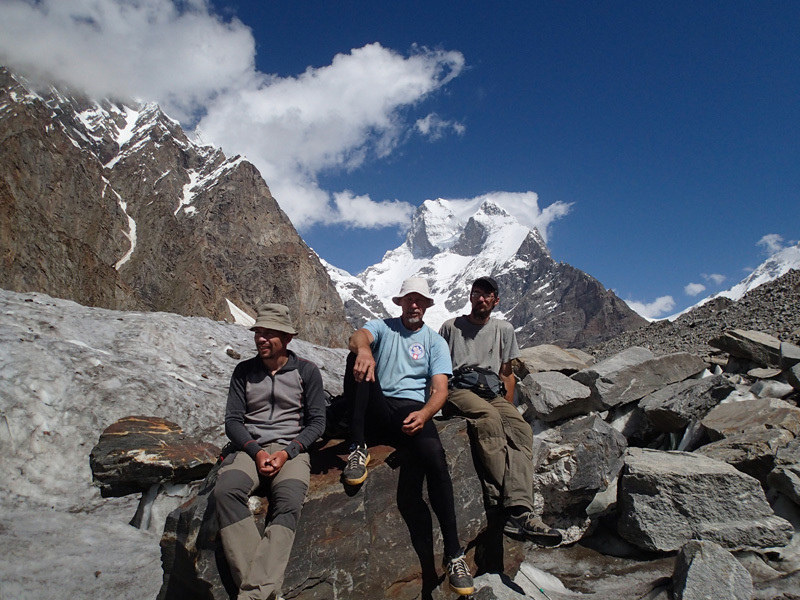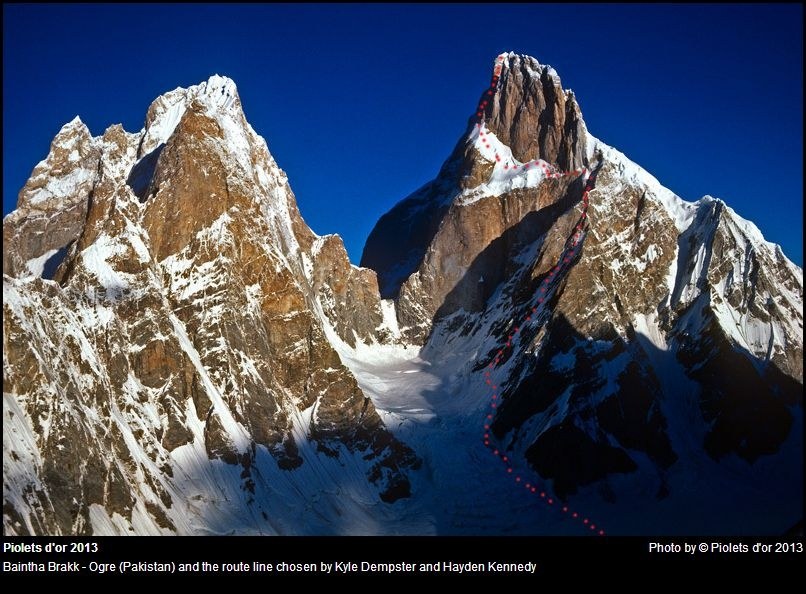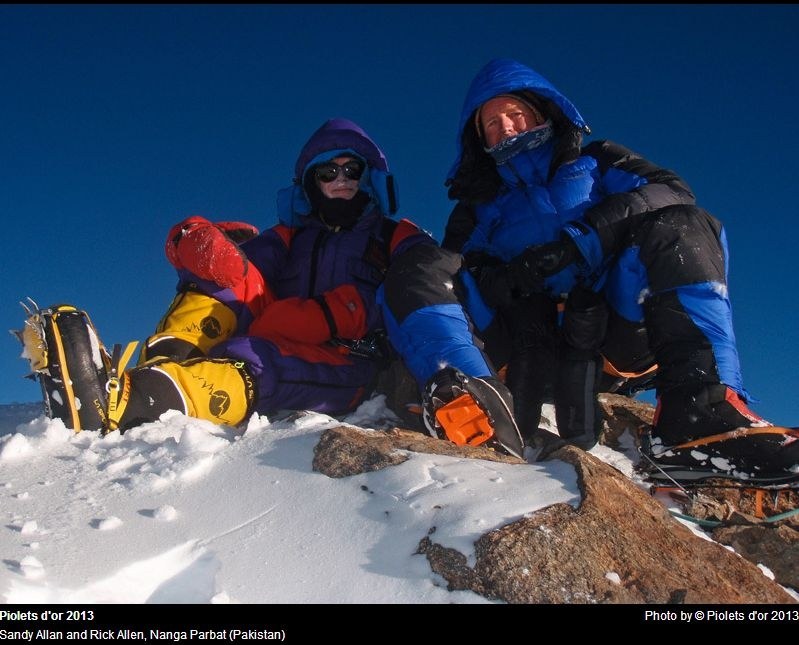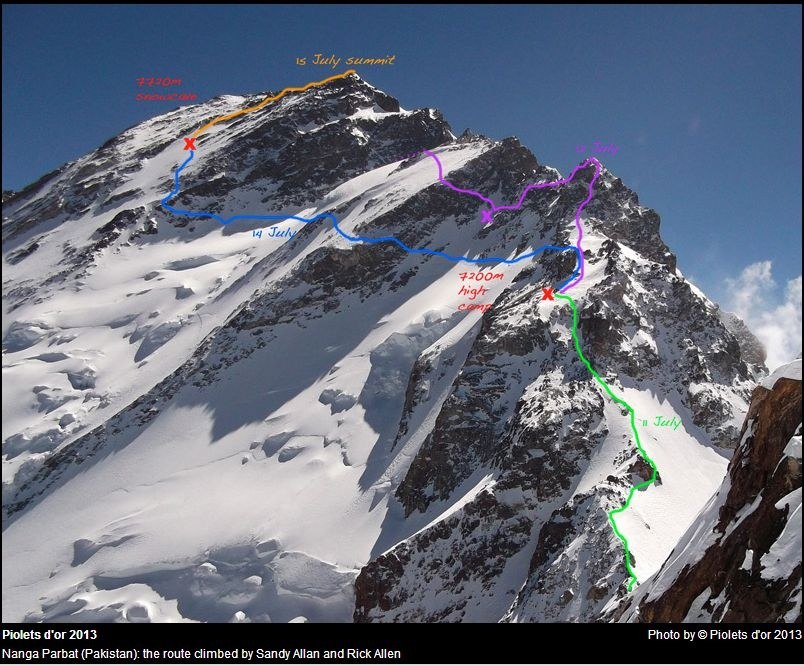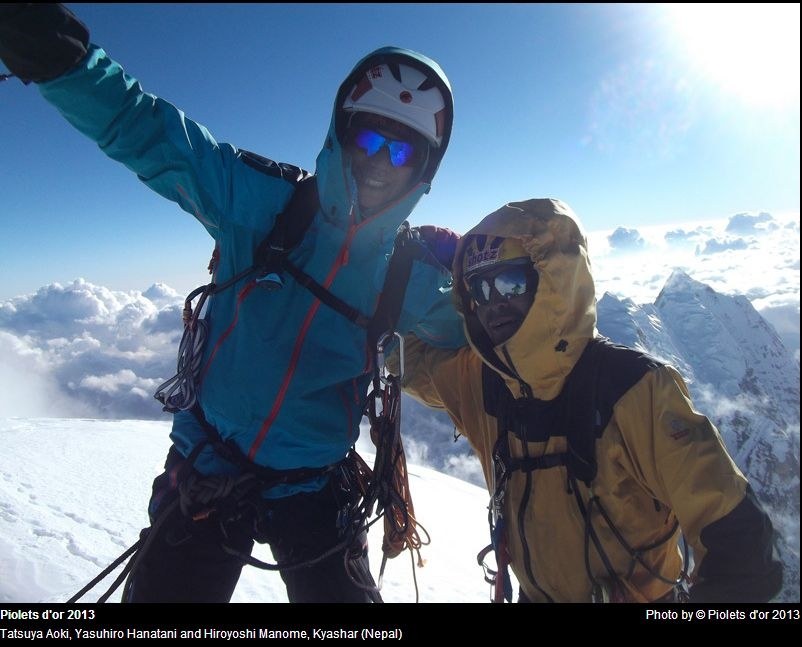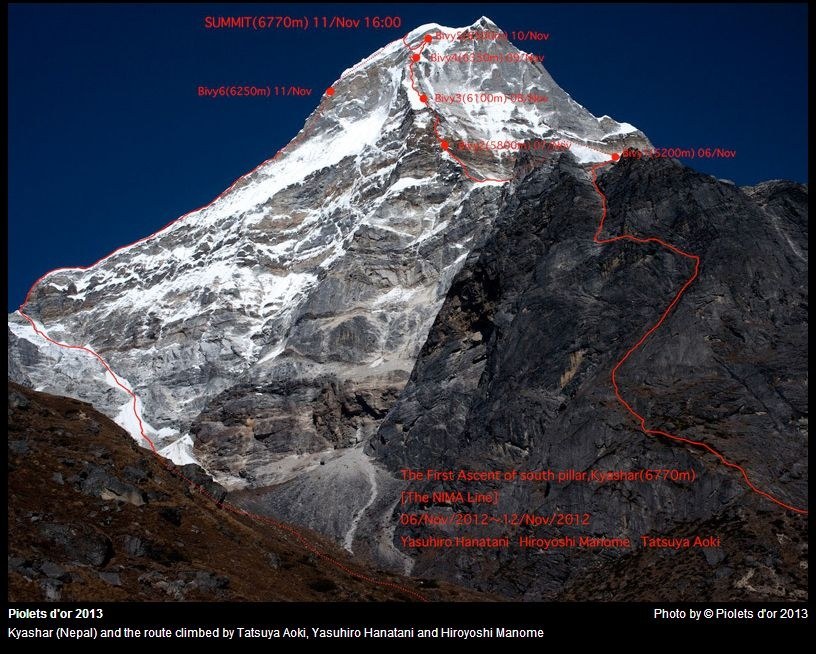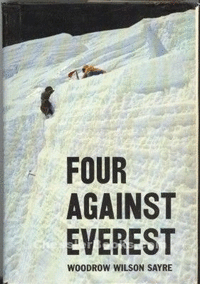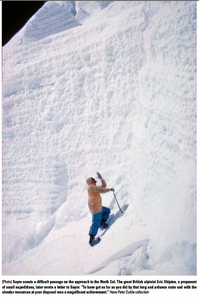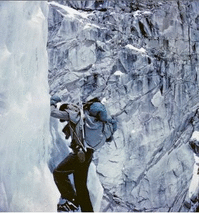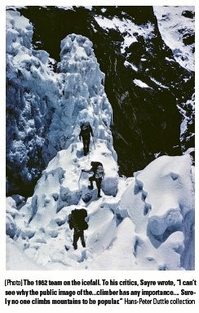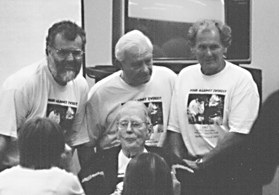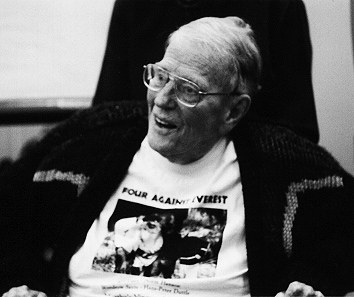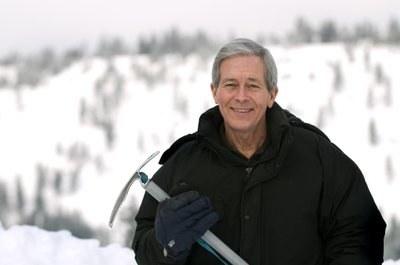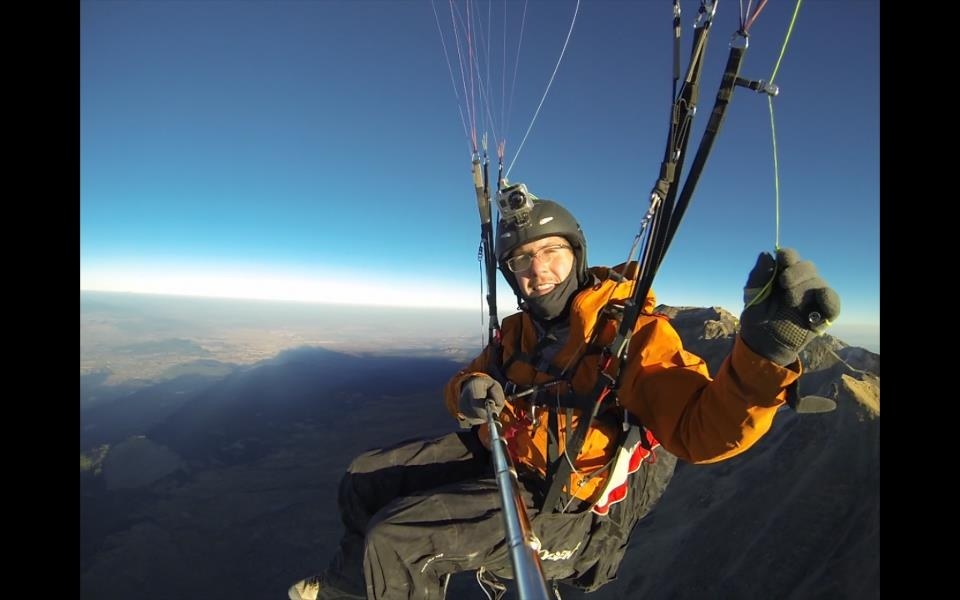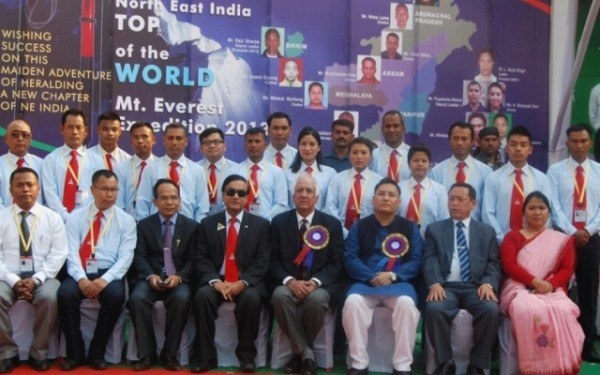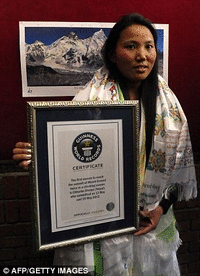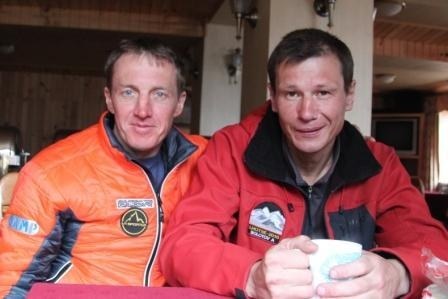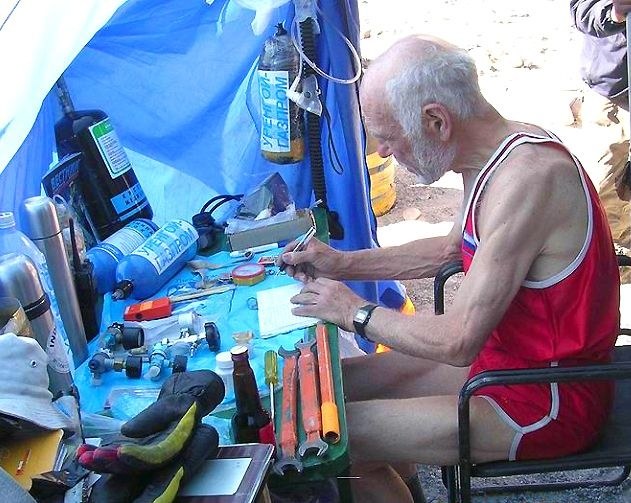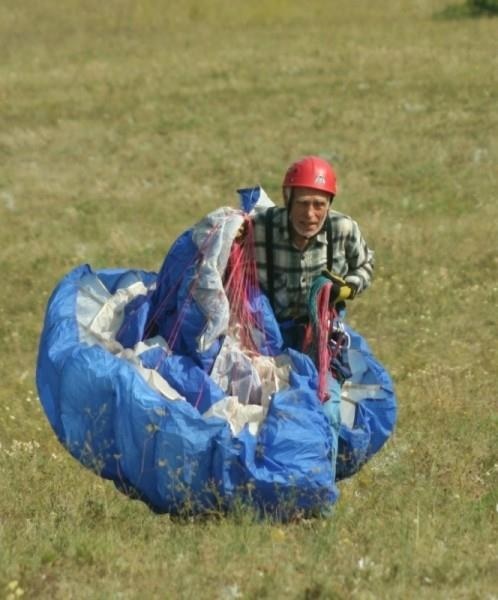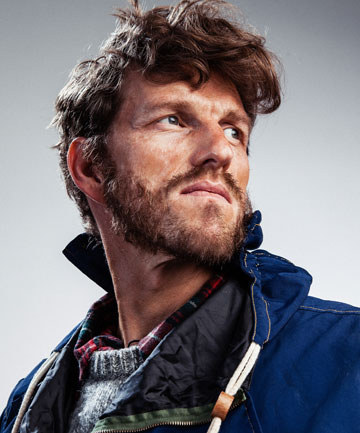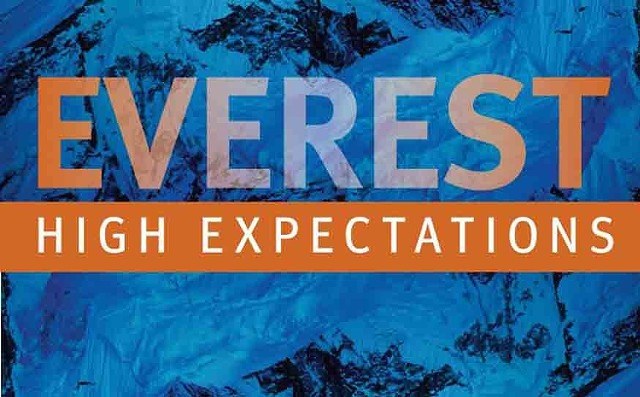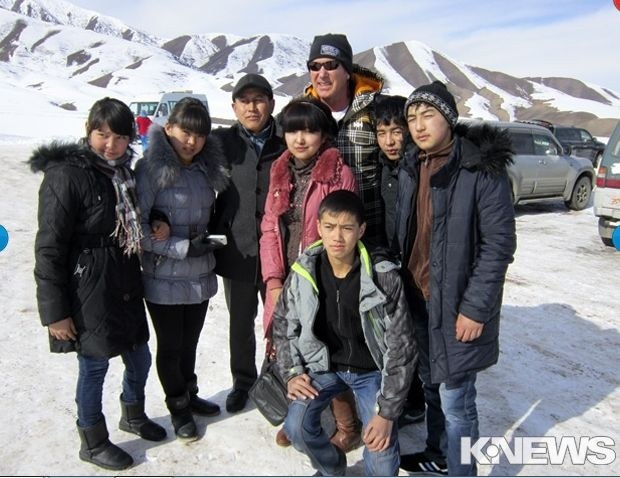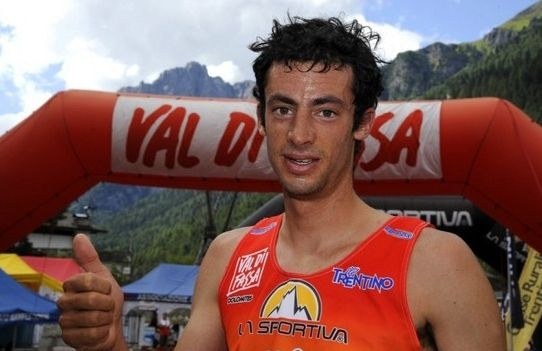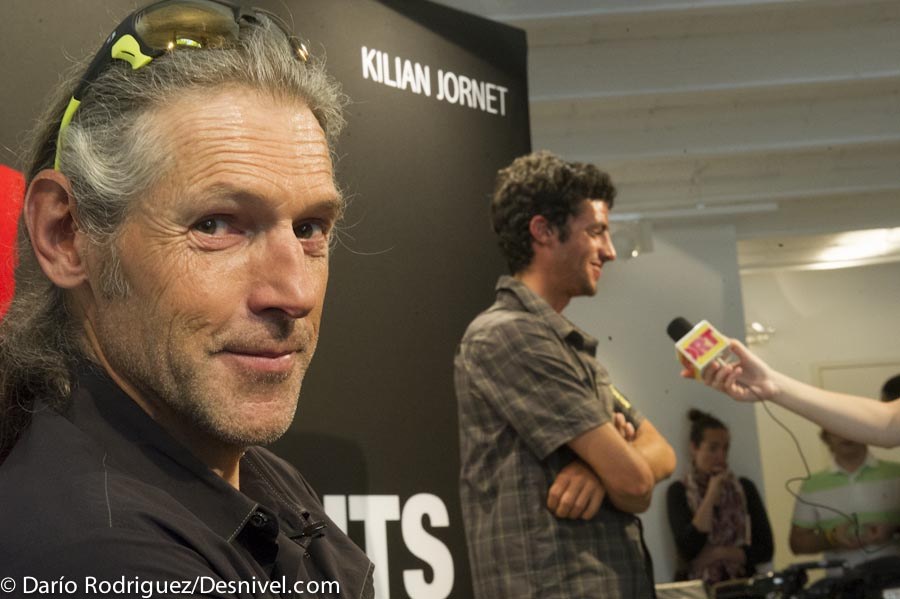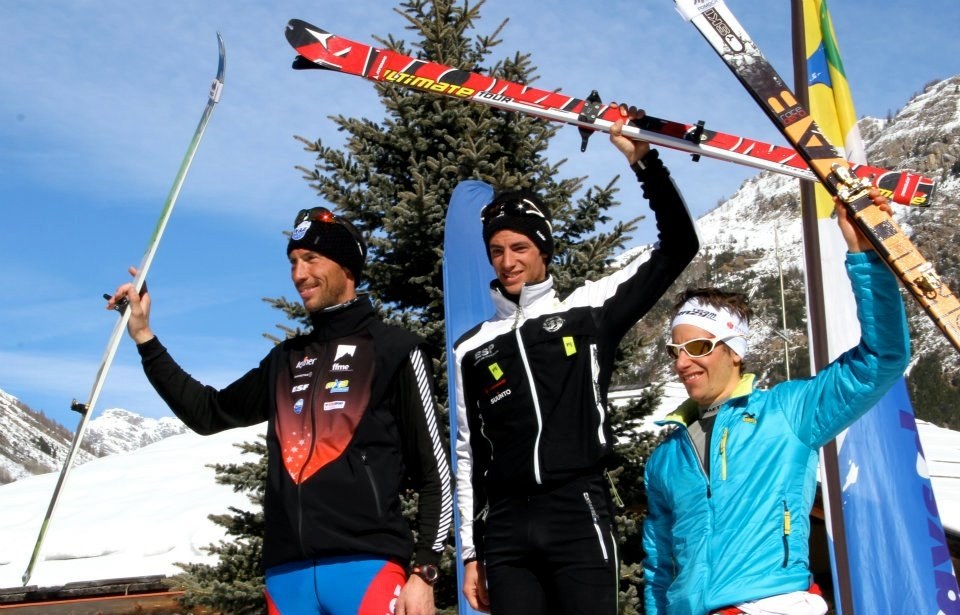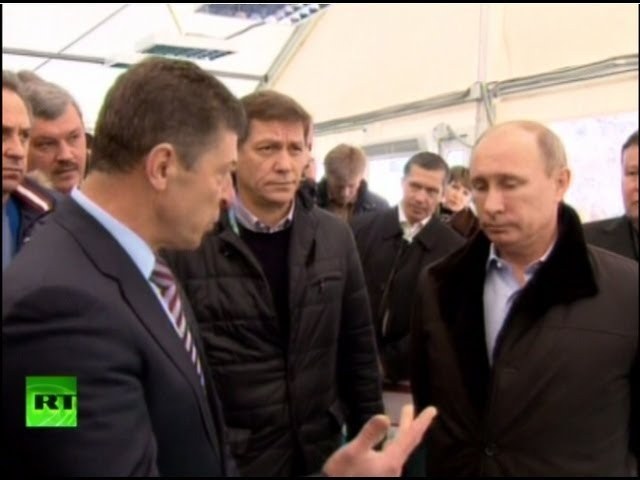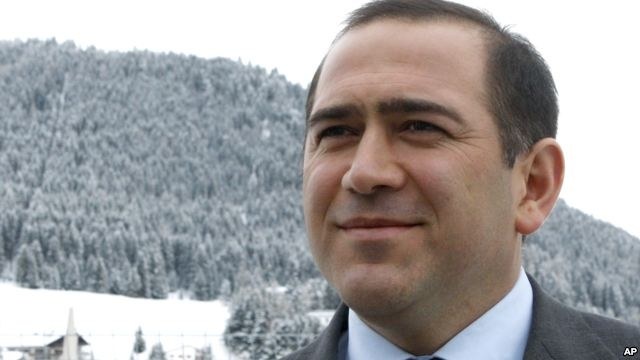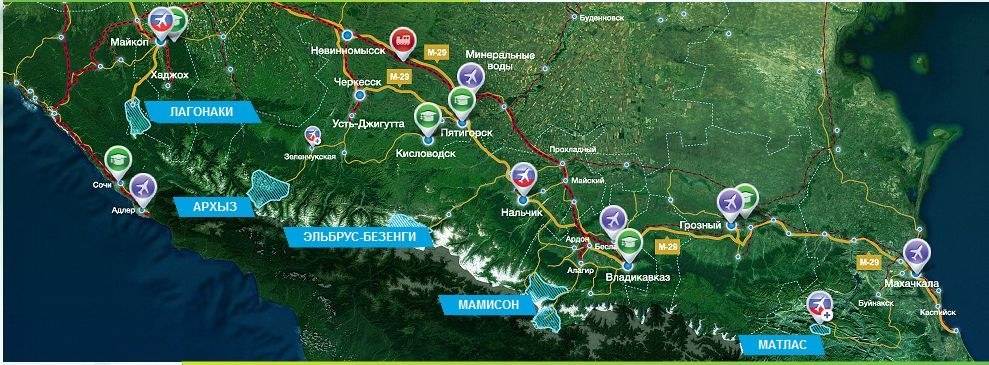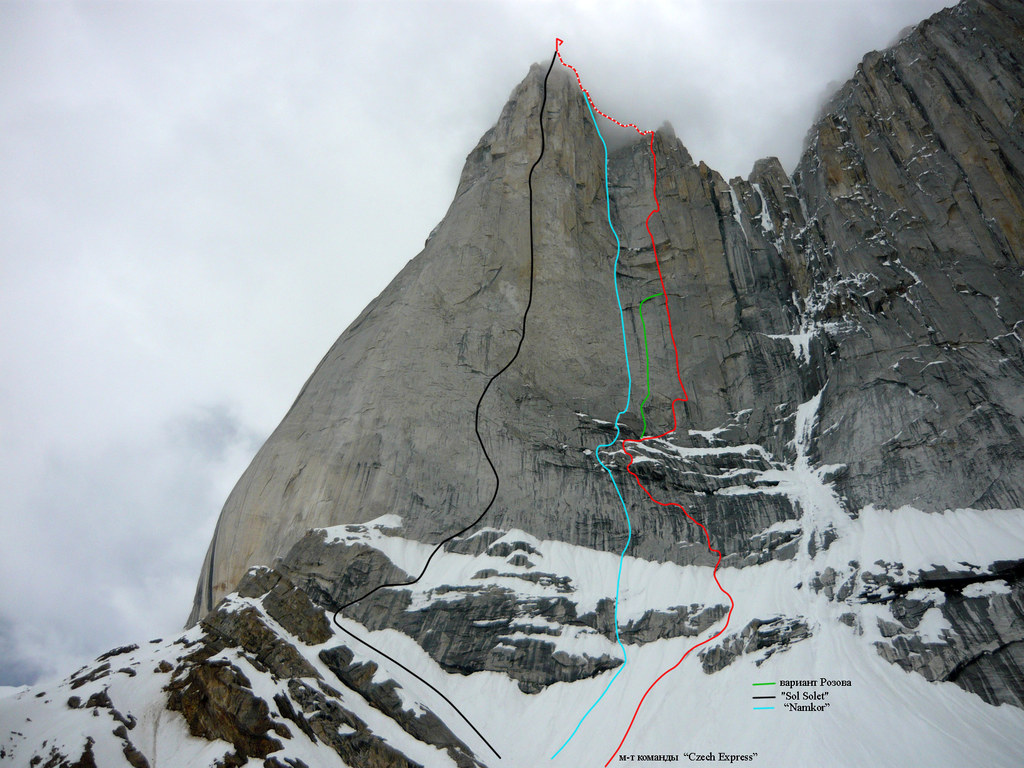World mountain's news
Alpine Skiing back to Elbrus after a decade
Elbrus.
On Saturday, February 14, the slopes of Elbrus became the site of competition for the Cup of Russia in Alpine skiing. The competition was held in two disciplines: Super G and giant slalom. This competitions included in the International Ski ...
On Saturday, February 14, the slopes of Elbrus became the site of competition for the Cup of Russia in Alpine skiing. The competition was held in two disciplines: Super G and giant slalom. This competitions included in the International Ski Federation calendar. This is the first official competition in the area for 10 years. 50 strongest athletes come here from across the country. Daria Kolomova from the Kemerovo region was the first in women competitions, for men - Alexander Boysov from Krasnoyarsk.
A large delegation of officials present at the opening of the competition. Minister for the North Caucasus Lev Kuznetsov during the opening ceremony, said that for the development of skiing in Kabardino-Balkaria authorities plan to allocate 1 billion rubles in 2015.
From the right: Lev Kuznetsov, Yuri Kokov, Oleg Gorchev...
The same - on ski
The head of Kabardino-Balkaria Yuri Kokov said: "We see strong support for the development of Elbrus from the federal center. And local authorities, for their part, should talk less and do more. We have a lot of reserves, and, above all, it is manpower. We will strive to make world-class resort. "
"These funds will be used to finish the third part of cableway on Mount Elbrus, expand and refine the ski slopes of the Mir - Gara-Bashi area, and for the design of artificial snow in 2015-2016", - CEO of company "Resorts of the North Caucasus" Oleg Gorchev said.
Russian Mountaineering Legend Goes Missing During Mount Elbrus Climb
Elbrus.
An well-known Russian-Ingush woman alpinist has gone missing on the country's highest mountain, authorities in the republic of Kabardino-Balkaria said last Wednesday. Leila Albogachiyeva, the first Russian woman to have ascended Mount ...
An well-known Russian-Ingush woman alpinist has gone missing on the country's highest mountain, authorities in the republic of Kabardino-Balkaria said last Wednesday.
Leila Albogachiyeva, the first Russian woman to have ascended Mount Everest from two sides, has been missing since Monday after she failed to return to the Terskol valley during her descent from Mount Elbrus, the regional Interior Ministry said in an online statement.
A team has been organized to scour Mount Elbrus — also the highest peak in Europe — in search of Albogachiyeva, but strong winds and heavy snow had hindered rescue efforts over the past two days, the ministry said.
The Leila's belongings (backpack, camera, poles, combi suit) were discovered by alpinists from the city of Nizhny Novgorod on the Eastern slopes of Mount Elbrus. Probably she left it to go to the toilet and slipped.
She had not provided her itinerary to Mount Elbrus' search and rescue team ahead of her climb, which also complicates their efforts to locate her, according to authorities.
The 7 Summits-Club: First in her nobody believed. In the team “Ingushetia on top of the world", it seemed, she was included for the statistics. There must be at least one person is a female! As she just went to the end, each time she was going to end, not giving a chance to her weaknesses. Iron will... Elbrus, Kilimanjaro, Aconcagua, finally, Everest. It seemed that was her limit. But it was followed by a second Everest, the plans were for third time. And much more... Climbing skill of her, of course, was not enough, as a knowledge, understanding. But it is unlikely to have played a role in the tragic incident. It's really a coincidence...
The last shooting Leila was made in the vicinity of the summit of Elbrus
According to the video camera it was recorded the 17th of September, at about 4 p.m.. Most likely on the same day, disaster struck.
Message to the rulers of the world are against the war. This is the story of a climb Leila on the summits of Elbrus
Congratulations to our friends Harry and Ivana with the birth of their second son!
Everest.
Harry Kikstra and Ivan Corea now have two sons! We are very happy for them. And we hope to meet our friends somewhere in the vastness of our planet. Harry Kikstra means a lot for the program of the 7 Summits and we very much appreciate the ...
Harry Kikstra and Ivan Corea now have two sons! We are very happy for them. And we hope to meet our friends somewhere in the vastness of our planet. Harry Kikstra means a lot for the program of the 7 Summits and we very much appreciate the friendship with him. Continue to be happy, Harry, Ivana and two kids!
Alex and Harry - two Sevensummitsmen
Film Flying High about Everest base jump of Valery Rozov was shown in Moscow
Everest.
Russian extreme BASE-jumper and wingsuit pilot Valery Rozov sets out to accomplish the highest BASE-jump and wingsuit flight in the history of mankind from the Everest mounain range. The adventure turns out to be a two year slog of ...
Russian extreme BASE-jumper and wingsuit pilot Valery Rozov sets out to accomplish the highest BASE-jump and wingsuit flight in the history of mankind from the Everest mounain range. The adventure turns out to be a two year slog of test jumps, measurements and frantically searching the perfect wingsuit design for an altitude flight in thin air. A new record jump off Matterhorn (4.478 m) and the first wingsuit flight from Mount Shivling (6543 m) in India turn into precursors for the final leap...
The premiere of the film Flying High. The Quest for Everest
Everest from Nepal.
On 9th April, in the cinema «35 mm» - a premiere of the film about the record of base-jumping. In may 2013 Valery Rozov has made a record height of base jumping from 7,220 m above sea level. After 60 years since the first ascent ...
On 9th April, in the cinema «35 mm» - a premiere of the film about the record of base-jumping.
In may 2013 Valery Rozov has made a record height of base jumping from 7,220 m above sea level. After 60 years since the first ascent to the highest peak of the world, a video with a man flying in a wingsuit over an array of Mount Everest, has opened a new Chapter in the history of conquer the summit.
By the documentary Flying High The Quest for Everest, the history of record base jump Valery Rozov will be understandable and interesting even for the uninitiated viewer. The picture reveals details of the project, telling about several years of preparation, all the difficulties of the ascent and the jump. Unique footage shows a man and a team who are willing to risk much, for the sake of the goal set and incredible feeling of flight.
April 9, everyone will be able to see the movie Flying High. The Quest for Everest at the premiere screening at the cinema «35 mm», and also to ask all questions of its main character - Valery Rozov.
Address: Moscow, M. Krasnye Vorota, Pokrovka street, 47/24.
Guests gather - 20.00
To start showing - 20.30
Free entrance
Trailer
The Olympic flame has been lit at Mt. Elbrus. Nice view of Elbrus summit
Elbrus.
At the end of October 2013, an ascent of the western summit of the "two-peaked mountain" was made by experienced mountain climbers: Karina Mezova, who has climbed to the summit of Mount Elbrus 130 times, and Abdul-Khalim Elmezov, President ...
At the end of October 2013, an ascent of the western summit of the "two-peaked mountain" was made by experienced mountain climbers: Karina Mezova, who has climbed to the summit of Mount Elbrus 130 times, and Abdul-Khalim Elmezov, President of the Climbing Federation of the Republic of Kabardino-Balkaria. Both climbers are close friends of the 7 Summits Club, both are Everest summiters.
http://www.youtube.com/watch?v=dCA4W9ltGKA&feature=youtu.be
Russia Today
http://rt.com/news/olympic-torch-mount-elbrus-511/
A handout picture taken during the Sochi 2014 Winter relay on October 25, 2013 and released by the Sochi 2014 Winter Olympics Organizing Committee, shows torchbearers carrying an Olympic torch at the Elbrus Mount in Russia's North Caucasus region. (AFP Photo/Sochi 2014 Winter Olympics Organizing Committee)
With the Winter Olympic Games in Sochi just round the corner, the Olympic Flame has been lit at the summit of the highest point in Europe, Mount Elbrus, which lies in the Greater Caucasus mountain range.
During the relay, the longest in Olympic history, the Olympic torch has been seen at the International Space Station, in outer space, on the bottom of Lake Baikal, at the main Buddhist temple and monastery in the Republic of Buryatia, on top of Avachinsky volcano on the Kamchatka Peninsula, and at the North Pole.
A team of five experienced mountaineers has also reached the summit of Mount Elbrus with the Olympic Flame in a special lantern, the Torch Relay Committee revealed on Saturday.
Although commonly known as a mountain, Mount Elbrus is in fact a layered volcano, which last erupted about 2,000 years ago. It has long been a challenge for climbers from across the world, with the first documented ascent of the eastern summit in 1829. The slightly higher western peak was first conquered in 1874.
The plan to take the Olympic Flame to the western peak of Elbrus, at an altitude of 5,642 meters above sea level, was developed separately from the main Olympic Torch Relay route to have a chance to choose the best possible weather conditions for the climb.
At the end of October 2013, a Russian team of mountain climbers made an ascent of the western summit of Elbrus. One of the mountaineers, Karina Mezova, has climbed to the summit of Elbrus 130 times; the other, the president of the Climbing Federation of the Republic of Kabardino-Balkaria, Abdul-Khalim Elmezov, has climbed Elbrus more than 220 times.
A total of 14,000 torch bearers have taken part in the 2014 Olympic Torch Relay, with the oldest participant aged 101. Meanwhile, the average pace of the Olympic Torch Relay is 534 kilometers a day, with a variety of means of transportation available to ship it, including the traditional Russian three-horse sled, the troika, dog sled and reindeer sled, a hot air balloon, an amphibious motorboat, a medieval “ladya” Russian sailboat, a motorbike, a water scooter, a wakeboard, a ski bike, a snowmobile, as well as a snow-and-swamp buggy, just to name a few.
The 2014 Olympic Torch Relay has been hosted by 135 cities located in all of Russia’s 83 federal subjects. The longest nonstop leg of the relay spanned 2,055 kilometers, between the cities of Norilsk and Yakutsk in the Russian Far East.
On the official site of the Torchrelay of Sochi2014
http://torchrelay.sochi2014.com/en/photo-and-video#video=the-olympic-flame-has-been-lit-at-mt-elbrus
We wish you a merry Christmas and a happy New Year!
We wish you a merry Christmas and a happy New Year! WISH YOU ALL A MERRY CHRISTMAS WISH YOU ALL A GREAT NEW YEAR JOIN OUR CLUBLET'S CLIMB TOGHETHER !
We wish you a merry Christmas and a happy New Year!
WISH YOU ALL A MERRY CHRISTMAS
WISH YOU ALL A GREAT NEW YEAR
JOIN OUR CLUB
LET'S CLIMB TOGHETHER !
Golden Axe of Russia 2013
In the evening on December 14 the Federation of mountaineering ofRussia(FAR) collected mountaineering community in the Rianovosti fine press center inZubovsky Boulevard. There was a presentation of awards for outstanding achievements in ...
In the evening on December 14 the Federation of mountaineering ofRussia(FAR) collected mountaineering community in the Rianovosti fine press center inZubovsky Boulevard. There was a presentation of awards for outstanding achievements in mountaineering in 2013. Everything was great! We saw many interesting presentations and met a lot of wonderful persons. Pleased that the 7 Summits Club received many thanks from the organizers, participants and guests for a help in organizing the meeting.
Alexander Ruchkin and Vyacheslav Ivanov (St. Petersburg) became the winners of the first prize of evening "Golden axe ofRussia", a prize for the best climb of 2013. For a new route "Falling in the void" inNepal.
7 Summits Club - sponsor of the national award " Golden Ice Axe of Russia
Everest.
Competition for the best ascent of the year is held by Russian Mountaineering Federation since 2007. It is the official name - National Award " Golden Ice Axe of Russia". 7 Summits Club is not the first time acting as a sponsor of this ...
Competition for the best ascent of the year is held by Russian Mountaineering Federation since 2007.
It is the official name - National Award " Golden Ice Axe of Russia". 7 Summits Club is not the first time acting as a sponsor of this event. We are all climbers and current interest in the development of our sport. We believe that the important thing is to support the country's strongest climbers and disseminate information about their achievements . It is to this purpose, and should serve as a contest.
We invite all our friends !
Place: Moscow , MMPTS " RIA Novosti " Moscow, Zubovsky boulevard , 4, " RIA Novosti " .
DATE: December 14. Saturday .
Arrival of guests at 18.00
Denis Provalov: the demand for a record – 11000 meters
Everest.
In the world there are many ideas to surprise mankind. Among them, it is possible to carry a record of difference of height of climbing up to mountains and descent down in a cave. Now it isn't known who is a leader in this category. A guide ...
In the world there are many ideas to surprise mankind. Among them, it is possible to carry a record of difference of height of climbing up to mountains and descent down in a cave. Now it isn't known who is a leader in this category. A guide of the 7 Summits Club Denis Provalov is trying to become the first. His plan - 11000 meters was declared few years ago. On Everest he can reach 8848 meters. In the cave – Kruber's - Voronya Denis was already at a depth of 2140 meters. In the sum – 10988 meters. It will be impossible to climb higher than Everest. And it is possible to go down, probably, still more deeply. On 12 meters it is so precisely, because his colleagues already reached 2170 meters (world record).
Today Denis Provalov will start for a climb ofMount Everestfrom the base camp.
Denis as a winner of Elbrus Race
XVI Moscow International Festival of Mountaineering and Adventure Films Vertical
Everest.
XVI Moscow International Festival of Mountaineering and Adventure Films Vertical will take place in Moscow, Russia, 26-27 of April 2013. The aim of the Festival is to present international production of mountaineering and adventure films ...
XVI Moscow International Festival of Mountaineering and Adventure Films Vertical will take place in Moscow, Russia, 26-27 of April 2013. The aim of the Festival is to present international production of mountaineering and adventure films and to encourage development in this branch of film making.
James Wilde: MOVING MOUNTAINS, a book about seven summits and Global H2O
Everest.
MOVING MOUNTAINS: How the dream to climb the seven summits transformed in the charity Global H2O According to his publisher's site, Outskirts Press, the summary is as follows: Publication Date: February 12, 2013 Number of pages: 410 MOVING ...
MOVING MOUNTAINS: How the dream to climb the seven summits transformed in the charity Global H2O
According to his publisher's site, Outskirts Press, the summary is as follows:
Publication Date: February 12, 2013 Number of pages: 410
MOVING MOUNTAINS "The story of how my dream to climb the seven continental summits transformed into providing clean drinking water to the people of northernUganda. In 2010, I set out to climb Everest from the north side and to complete the seven summits (climbing to the summit of the highest peak on every continent). During my training in theHimalaya, I discovered the water crisis and it changed me. It was then in 2009 when I fell ill with dysentery onCho Oyu, forcing me to turn back on my attempt to reach the 6th highest peak on the planet. During the time I was sick, I encountered what most people without clean water experience on a regular basis. Upon my return home toMunich, I dedicated my climb of Everest to the water crisis and founded a 501(c)3 entity in theUSA. I focused an entire year of my life on reaching the highest point on the planet and creating an all-volunteer organization with the goal to provide clean drinking water to the people in northernUganda. What was originally a personal goal became a quest to deliver clean drinking water to the thirsty millions in war-stricken northernUganda. Through this story, the charity, Global H2O, was born." http://outskirtspress.com/moving_mountains/
James DeWitt Wilde V (born September 24, 1970) is an American sportsman, explorer and philanthropist living inMunich,Germany. On October 19, 2010, Wilde climbed Kosciuzsko inAustralia, completing his quest to climb the seven summits, becoming number 216 on the all-time Kosciuszko list.
Currently, James is working on the restructuring project of a major telecommunications operator inAngola, originally as the Head of the Finance Team and now the Executive Director of Strategy.
Apart from his native language, English, James speaks German, Portuguese, French and Russian. James has an MBA in International Business and Finance and Bachelor degrees in Journalism/Marketing as well as Business Administration.
James founded the charity Global H2O in 2009, helping to establish a means to bringing clean drinking water and developmental progress to theNorthern provincesof worn tornUganda. Since its inception, James has worked tirelessly to help the needy in his free time and most notably has completed the book, MOVING MOUNTAINS, documenting this amazing journey.
Wilde's seven summits
Aconcagua, 12/01/2006
Elbrus, 30/04/2003
Everest, 23/05/2010
Kilimanjaro, 04/11/2002
Kosciuszko, 19/10/2010
McKinley, 02/07/2004
Vinson, 02/01/2009
On Everest
Jim has participated in two expeditions 7 Summits Club on Everest. In the first one, in 2005, he could not reach the top. But he got a lot of Russian friends and a new name - "Dikiy", which appeared only as a translation of his surname. Then, in a warm international company of 7 Summits Club, headed by Lyudmila Korobeshko and Sergey Kofanov, Jim met new 2009 inAntarctica. Then he climbed to the top of the Mount of Vinson. And in 2010, he managed to make the main dream - to climb Everest. It happened on May 23, in the company of Noel Hanna, Steve Berry, Mikhail Turovsky, Andrey Filkov, Sirdar Mingma and four other Sherpas.
Everest expedition 2010
Site of James
Global H2O
!
http://www.facebook.com/GlobalH2O.org
7 Summits from Google Maps
Kilimanjaro.
Google has been doing a lot to make Google Maps more about exploring the world, including places few will ever be able to see with their own eyes. Today, the company announced that it has added more locations to Maps, including Street ...
Google has been doing a lot to make Google Maps more about exploring the world, including places few will ever be able to see with their own eyes. Today, the company announced that it has added more locations to Maps, including Street View-style access to some of the highest peaks in the world.
Via the official Google Blog, the company revealed the introduction of new Street View features for some of Earth’s most celebrated mountains, including Everest, Mount Elbrus, Aconcagua and Kilimanjaro. They belong to the famous Seven Summits, an elite collection of the highest mountains on each continent. You don’t even have to acclimatize to high altitudes to check out these locations on Google Maps.
There’s a lot of detail in the virtual tours you can take of these peaks, including images of base camps set up by actual explorers. Google set out with a fisheye lens and lightweight tripod to capture the images, and will be detailing the whole expedition in a Google+ Hangout which is set to kick off at 10 AM PT today.
Google has been doing a lot to build out some amazing views of the more remote corners of the world, including its recent introduction of Street View tours of the Grand Canyon, Antarctica and other far-flung locations. Google’s remote tourism is actually an incredibly cool way to attract eyeballs to the Maps product, while helping the company build out an even more comprehensive database than it already has.
---
Aconcagua. Summit
Everest. Base camp
Kilimanjaro. Shira camp
http://maps.google.com/intl/en/help/maps/streetview/gallery/the-worlds-highest-peaks/shira-camp.html
Elbrus. Barrels Refufe
http://maps.google.com/intl/en/help/maps/streetview/gallery/the-worlds-highest-peaks/shira-camp.html
Your day job, not to mention fitness level, will probably keep you from ever ascending the mightiest peaks on Earth. Don’t worry. Google’s done the hard work for you and released the stunning panoramic images needed to make you feel like you’re on top of the world.
Google, which seems determined to map every square inch of the planet, on Monday released Street View images from four of the seven tallest mountains on earth. One lucky engineer, who happens to be a passionate mountaineer, led the Google Mountain Enthusiast team during a project that was strictly a labor of love for all involved.
“There’s a social benefit to using these tools to tell the story in these environments. A chance to really connect to whats on the ground with a rich imagery so they can see what it looks like and feels like to be there,” says Dan Fredinburg, who is a technical program manager for security and privacy when he isn’t scaling summits.
Fredinburg’s teams — which included four to seven people, depending upon the trip — used a lightweight tripod and digital camera with a fisheye lens to visually map Aconcagua in Argentina (22,841 feet), Mount Kilimanjaro in Tanzania (19,341 Feet), Mount Elbrus in Russia (18,510 feet) and Everest South Base Camp in Nepal (17,598 feet). It’s the same setup the Street View team uses for the Business Photos program. They opted to use that rig instead of the 40-pound, 75-megapixel Google Trekker backpack.
“When you’re going expeditions in the alpine style environment, every gram, every ounce, every pound counts,” Fredinburg says.
Fredinburg says Google has been very receptive and supportive of his blending together work and play. Beyond slaking his thirst for adventure, the excursions — made over the course of 18 months — helped make Street View more accurate, vivid and useful for his fellow adventurers, as well as those happy to explore Earth from the comfort of home.
His passion for climbing almost got the better of him while climbing Everest. He really, really wanted to go all the way to the top, but the team arrived just before the summit window in October.
“It was only planned to go to the basecamp,” says Fredinburg. “I did try to convince my guides to take me further up. I was very excited when I got to basecamp.”
His enthusiasm led to an awkward conversation with the guides, who refused to take him any higher than base camp. He pressed the issue, and offered to pay them for their trouble. Still, they refused. It eventually dawned on him that perhaps it was too risky. So he asked about the odds of dying.
“Certain,” came the response. “100 percent.”
Dan Fredinburg on Elbrus
Moscow climbers are nominated for Piolets d’Or
THE NOMINATED ASCENTS Kamet (7,756m), India Kamet is the highest mountain inIndiafor which it is currently possible to gain a permit, and the ca 2,000m southwest face was previously unattempted. After establishing an advanced base in ...
THE NOMINATED ASCENTS
Kamet (7,756m), India
Kamet is the highest mountain inIndiafor which it is currently possible to gain a permit, and the ca 2,000m southwest face was previously unattempted. After establishing an advanced base in the glacier bowl below this steep mixed wall, Sebastien Bohin, Didier Jourdain, Sebastien Moatti and Sebastien Ratel (France) climbed it, alpine-style, in five days. They found conditions excellent and connected a succession of steep snow fields linked by often vertical ice pitches to reach a bivouac on the south ridge at 7,500m. The summit day presented unexpected difficulties, after which the team descended to the bivouac and next day went down the previously untouched south face.
Shiva (6,142m),India
Elegance summarizes the traverse of this mountain east of Kishtwar, effected via the arrow-like northeast ridge, dubbed the Prow of Shiva, followed by a descent of the south ridge. It was the fifth known ascent of the mountain. Mick Fowler and Paul Ramsden (UK), 2003 recipients of a Piolet d'Or, completed a traverse in a nine-day round trip from base camp, finding sustained climbing on the Prow, which ranged from numerous pitches up icy cracks in Chamonix-style granite to long, protectionless leads on thinly-iced slabs reminiscent of winter climbing on Ben Nevis.
Muztagh Tower(7,284m),Pakistan.
Much discussed, though never previously attempted, the 2,000m northeast spur of this iconic Karakoram peak took Russians Dmitry Golovchenko, Alexander Lange and Sergey Nilov (Russia) 17 days to complete. The three climbed alpine-style but took a large haul bag of food and fuel, a strategy which allowed them to sit out, or persevere slowly through bad weather. The technical crux proved to be the very steep rock barrier between 6,600m and 6,900m. Supplies ran out shortly before they gained the main (east) summit, and in bad weather they were unable to reach the northwest ridge, their planned descent. Instead, they came straight down the north face.
Baintha Brakk (a.k.a The Ogre, 7,285m),Pakistan
The Ogre is one of the most celebrated of the world's mountains yet until last year had been summited only twice, and never from the south, despite many attempts. Kyle Dempster, Hayden Kennedy, and Josh Wharton (USA) chose a cunning line up the southeast ridge to southeast face to south face. Gaining the upper south face involved a steep traverse across complete rubble and, higher, they overcame hard sections of mixed ground. From a bivouac at 6,900m, Dempster and Kennedy reached the summit but then had to make a difficult descent with an unwell Wharton.
Nanga Parbat (8,125m), WesternHimalaya,Pakistan
The complete Mazeno Ridge of Nanga Parbat was undoubtedly one of the most famous unclimbed lines on the great peaks of the Karakoram/Himalaya, having been attempted many times, and by some of the world's greatest mountaineers. It is arguably the longest ridge on any of the 8,000m peaks, variously quoted as 10-13km. Veteran Himalayan activists Sandy Allan and Rick Allen (UK), accompanied for much of the way by Cathy O'Dowd (S Africa), Lhakpa Rangdu Sherpa, Lhakpa Zarok Sherpa and Lhakpa Nuru Sherpa (Nepal), took a pragmatic approach to this huge undertaking by acclimatizing on the first section of the ridge, before setting off alpine-style from base camp. They crossed all eight Mazeno summits, and from a bivouac at 7,200m made an unsuccessful attempt on the unclimbed continuation of the ridge direct to the top. At this point all but Allan and Allen gave up and made a difficult descent to the south. The British pair eventually traversed the north flank to the summit and made a difficult descent of theNormal Routeon the north flank, reaching the bottom after a traverse lasting 18 days.
Kyashar (6,770m), Nepal
A coveted line, having been the goal of at least seven previous expeditions, the first ascent of the 2,200m south pillar of Kyashar was one of the finest technical alpine-style climbs inNepallast autumn. Tatsuya Aoki, Yasuhiro Hanatani and Hiroyoshi Manome (Japan) took six days to climb this elegant line to the summit, making only the second known ascent of the mountain. A crux section of ridge on the fifth day was deemed irreversible, adding to the commitment. The three descended the west ridge with one further bivouac.
JURY 2013
Stephen Venables
Stephan Venables is a 58-year-old British alpinist who is considered a theorist of alpine-style climbing, which he helped popularize through his book “Himalaya Alpine-Style” (Arthaud, 1996, with Andy Fanshawe), and which in turn inspired numerous alpinists. In 1988, together with Robert Anderson, Ed Webster and Paul Teare, he completed his most famous ascent, the Kangshung face to the south col of Everest, which is considered difficult and dangerous. After reaching the south col at 8,000m, Stephen went on to reach the summit of Everest on his own after an incredible ascent and without bottled oxygen, which was a rare thing at that time and still remains exceptional. Stephan has been on numerous expeditions: Hindu Kush (Afghanistan/Pakistan, 1977), Kishtwar Shivling (India, 1983), SoluTower (Pakistan, 1987), Kusum Kanguru (Nepal, 1991), Panch Chuli V (India, 1992). He also climbed in Peru, Bolivia, Patagonia and South Georgia. He authored books and documentaries and was the President of the Alpine Club. He is the President of the jury of the 21st Piolets d’Or, seven years after having endorsed this same role, which honoured American alpinists Steve House and Vince Anderson for their remarkable ascent of the Rupal face onNanga Parbat.
Gerlinde Kaltenbrunner
Gerline Kaltenbrunner is the first woman to have climbed all the 14 8,000m peaks in the Himalayas without oxygen, sometimes by ascending difficult routes, but mostly with small teams. She climbed the north ridge of K2 in august 2011 to complete this challenge, together with Pole Darek Zaluski and Kazakhs Maxut Zumayev and Vassiliy Pivtsov. This 41-year-old Austrian alpinist recently did an alpine-style ascent of Nuptse (7861m,Nepal), where she repeated, over the course of four days, the Bettembourg-Hall-Rouse-Scott route with German alpinist David Gottler. After focusing on climbing the 14 highest summits on the planet for the past 12 years, Kaltenbrunner is now applying her alpine-style ethic to lesser-known summits in theHimalayas.
Silvo Karo
52 years old, is one of the best Slovenian alpinists. He has solved some of the great alpine “problems”, such as Bhagirathi III (India, Garhwal, 1990). In 1986, together with his Slovenian friends, he opened a new route on the East face of Cerro Torre inPatagonia, called The Directissima to Hell. He has been very active in this south part of theAndes, where he did a first ascent on Torre Egger and on Fitz Roy. With Rolando Garibotti, he experimented with the non-stop style of climbing by doing a 30hour push up the Slovak route on the southwest face of Fitz Roy. In 2005, he climbed the southeast ridge of Cerro Torre, which starts by ascending the Aguje Medialuna: 1700m of climbing. In Pakistanin 2006, he climbed Eternal Flame on Trango (Pakistan) in a day. Silvo is a particularly fast climber with a long and prolific career. He is also an activist for the mountains through Mountain Wilderness. He was a member of the jury of the Piolets d’Or in 2006, under Stephen Venables’ presidency.
Katsutaka Yokoyama
Katsutaka “Jumbo” Yokoyama is a 31-year-old Japanese alpinist who has distinguished himself on many occasions on mountains all over the world:Bolivia,Alaska,Canadaand most recently,Patagonia. Several of his ascents, notably with his compatriots Yasushi Okada – 1st of the southeast face of mount Logan (5900m, Canada), I-To route, 2010 – or with Fumitaka Ichimura and Yusuke Sato – link up on Denali (6,194m, Alaska) of the Isis Face, Ramp on the descent and Slovak route, 2008 – were praised by their peers. They were awarded a Piolet d’Or from Greg Child who was the president of the Jury that year. Katsutaka is a keen supporter of alpine-style ascents; together with his friends listed above, he personifies this ethic, where commitment and the sparing use of resources are rules.
Everest News of February…
Everest.
1. History. Alpinist Magazine about 1962 adventure Everest expedition.... This is the true, almost unbelievable story of a daring attempt by four amateur mountaineers—a college professor, a school teacher, a lawyer and a ...
1. History. Alpinist Magazine about 1962 adventure Everest expedition....
This is the true, almost unbelievable story of a daring attempt by four amateur mountaineers—a college professor, a school teacher, a lawyer and a geology student — to climb the highest peak in the world—Everest.
Without Sherpas or other porters, and with a bare minimum of money, food and equipment, this small band of adventurers, led by Woodrow Wilson Sayre, set out to climb Everest's North Face, which to date has never been conquered.
Not even bottled oxygen, considered by most professional climbers as a necessity, was taken. To make the journey even more hazardous, the expedition had to make a secret dash throughTibetto reach the North Face, risking capture, imprisonment, or even execution by the Chinese Communists, who reputedly patrol the Tibet-Nepal border.
The type of terrain the party crossed is some of the roughest in the world. Sayre recalls that the trek fromKathmandu,Nepalto base camp at the foot of Gyachung Kang was 'like walking up and down ladders fromBostontoAlbany.' Immediately beyond base camp the glacier 'rises 3,000 feet in a tumble of crevasses and ice blocks, and it includes two nearly vertical cliffs of around 1,000 feet.' The route then crosses some 25 miles of untracked glaciers averaging 20,000 feet in altitude. Never before in a Himalayan climb has base camp been at such a distance from the mountain to be climbed. The North Face route begins with the ascent of theNorth Col, which itself is a 1,500-foot-high wall of ice and snow.
The task was grueling and torturous. Carrying every ounce of their supplies for 40 days on their own backs, they had to struggle towards the mountain day after day, gasping for oxygen in the extremely rarified air. At one point a huge ice block overturned and obliterated their intended route. Without medical aid, and three weeks from help of any kind as they were, the slightest accident or misjudgment could have brought immediate disaster. Sayre himself, in three falls, slipped an incredible 1,000 feet down the North Face of Everest—and still walked out.
Each man was driven close to the breaking point. Exhaustion became a constant companion. Food rations ran logs. Before the end of the brutal journey, there was nothing left to eat, and they faced starvation
But there are those treasured, never-to-be-forgotten moments during the expedition when Sayre tells of his feelings of pure exhilaration—'of being close to the top of the world, of taking in at a glimpse thousands of square miles of untouched country, of walking where only a handful of men have walked in the history of the world.'
2001. Last time together....
2. Alan Arnette about new season:
http://www.alanarnette.com/blog/everest-2013-coverage/
Dawes Eddy:
Q: Dawes, you are 70 and have already summited Everest. Why again?
I love adventure and a challenge and my Everest climb in 2009 provided me with both. The 45 minutes I spent on the summit watching the sunrise was a very moving experience, which I would like to repeat. Chronologically, I’ll be four years older, but my definition of aging is defined as loss of function. My loss of conditioning and aerobic capacity the past 4 years has been minimal and I want to demonstrate that with the proper lifestyle choices, all things are possible into a person’s 70?s and beyond.
David Tait
Q: Your 2013 effort will require extraordinary stamina. Can you share with us your plan?
Yes, my plan does demand exceptional stamina. i have it physically, but do i have it mentally is the question – i will take it slow, realise that this visit is a gift, and try to extract the most from it. I’m not going to set public targets….. I have one in my head [an extreme one], but we shall have to see.
David Liano
He will be attempting in 2013 something no climber has ever done on Everest – climb both sides separately in one season. David is no stranger to Everest with three summits on five different climbs, so he knows what he is getting into.
Q: Now you are looking at a double summit of Everest meaning you hope to summit from Nepal, climbing from the South, then move to Tibet to climb from the North. This has never been done in one season. What is your motivation?
My goals on Everest have evolved mostly due to permit, political and health issues. But my motivation has stayed the same through the years: to live unique and challenging adventures and never to settle for the ordinary.
North-East India Everest expedition. More than 20 climbers
3. Sherpa woman overcomes prejudice for Everest record
http://in.reuters.com/article/2013/02/28/nepal-everest-woman-chhurim-sherpa-idINDEE91R09O20130228
KATHMANDU | Thu Feb 28, 2013 3:50pm IST
(Reuters) - When Chhurim Sherpa was a child she was inspired to dream of scaling Mount Everest by the mountaineers heading to the Himalayan peaks which tower over her village in eastern Nepal.
But economic and social pressures stood in her way, including people saying she did not have the right to set foot on the sacred peak because she was a mere female.
Now the slender 29-year-old is celebrating her world record status as the first woman to climb Everest twice in one week.
"I am lucky to get sponsors and very happy that I have been able to earn a place of pride for our country," she told Reuters as she sat cross-legged in her second-floor Kathmandu apartment, wearing tight jeans and with a bowl of toffees in front of her.
Chhurim, who like many sherpas is called by her first name, climbed Everest, the world's highest peak at 8,850 metres (29,035 feet) on May 12 and 19, 2011. On February 25, Guinness World Records officially recognised her feat as a world first, making her an instant international celebrity.
The sixth of eight children, Chhurim was born in Ghunsa, a tiny village in the shadow of the world's third highest peak, Kangchenjunga, 8,586 m (28,169 ft) tall, in northeast Nepal.
As a child she was fascinated by tales of the historic climbs of Japan's Junko Tabei, who became the first woman to climb Everest in 1975, and Pasang Lhamu Sherpa, who was the first Nepali woman to summit in 1993 but died on the descent.
Actually climbing it herself seemed only a distant dream. While some 4,000 climbers have ascended Everest since it was first scaled by Sir Edmund Hillary and Tenzing Norgay Sherpa nearly 60 years ago, fewer than 400 have been women.
In addition, sherpas consider Mount Everest - known as Sagarmatha in Nepali and Qomolangma, or Holy Mother, in Tibetan - to be a deity.
"It was not easy," she said, recalling when she first said she wanted to climb Everest. "They were disapproving and said it is a god and why should a woman like you try to climb."
There were numerous hurdles to overcome. Maya Sherpa, another sherpa woman who has summited Everest, said expenses kept many women from the peak.
But Chhurim persevered, leaving school as a grade eight student and joining a climbing training course run by the Nepal Mountaineering Association. Sponsorship by a Nepali hiking group paid her fees for this and later climbing ventures.
After climbing two smaller mountains in the Everest region she began setting her sights seriously on Everest in 2010.
"Initially my parents were against the idea. They thought I might die," she said. "But I told them that other women had climbed as well and that I am well trained. Then they agreed."
Like other sherpa climbers, Chhurim performed Hindu and Buddhist religious rites before beginning the ascent, asking forgiveness for setting foot on the mountain.
"I bowed my head to touch the ground three times, offered khada (Buddhist prayer scarves) and planted prayer flags as soon as I reached the top," she said.
Chhurim now has a new goal - she wants to summit the highest mountains on all seven continents.
Attitudes are changing in the majority Hindu nation, and male climbers - including Pemba Tshering, who made headlines when he climbed the peak at 16 in 2001 - spoke with pride about her achievement.
"Nowhere has it been written that women should not climb mountains," he said. (Reporting by Gopal Sharma, editing by Elaine Lies and Paul Casciato)
4. Denis Urubko.
- Is an ascension on the verge, and the ticket for such ascensions is often bought only in one party is or you have come, or you do not have any chances, - Denis speaks. - but it also bewitches, it just that I always searched in the ascensions together with Sergey Samoilov, with Boris Dedeshko, that is it is the present mountaineering when all becomes only once, irrevocably, when the friend - it more than the brother, and a water - drink the greatest value.
5. Valentin Bozhukov
"At my age, to climb to such heights is dangerous - he says. - And especially dangerous - go down from such a height. Therefore, because of age, I'm going to use for the descent from Everest a glider. The main thing - not to be mistaken with the weather. "
6. Cinema.
Film based on 1953 Mt Everest climb to begin shooting
Shooting begins tomorrow at Aoraki Mount Cook for the film depicting Sir Edmund Hillary's conquest of Mount Everest.
The 3D film Beyond the Edge tells the story of the monumental 1953 ascent.
Interest is already building following the announcement last week that actors Chad Moffitt and Sonam Sherpa have been cast as Sir Ed and Tensing Norgay.
New Zealand Film Commission chief executive Graeme Mason is wishing everyone working on the film the best as they embark on the ambitious mountain shoot to recapture one of the country's most historic moments.
A Canada-born hypnotherapist with only a few minor acting credits willl play Sir Edmund Hillary in a 3D film recreating his 1953 conquest of Mt Everest.
Wellington-based Chad Moffitt, whose previous roles included playing a flesh-eating zombie, won film-makers over with a simple approach - he sent in a photo of himself holding a $5 note bearing Hillary's face.
His resemblance to the mountaineer has delighted Hillary's son, Peter, and family.
Hillary's granddaughter, Anna Boyer, said photos of the actor in the movie bore a striking likeness to her grandfather even though Moffitt is five years older than when Hillary topped the world.
"The photos look fantastic," she said.
"He's got the perfect craggy face, it's terrific.
"Peter met Moffitt last year and he was really happy with him."
Beyond The Edge producer Matthew Metcalfe said they deliberately did not want a famous face in the role.
"He's pretty much our most well-known icon, and everyone in New Zealand feels like they have a vested interest and connection with Ed.
"So we made a decision early on that we didn't want to use a ‘movie star'.
"There were various people floating around, but we made a point of saying the movie is bigger than the star, the story is bigger than the man."
Moffitt, who at 192cm is just 3cm shorter than Hillary, grew up in Nelson and is a keen mountaineer.
He says he is used to people telling him how much he looks like the late knight.
Moffitt has worked for Sir Peter Jackson's Weta Digital - but trained last year in hypnotherapy and works part-time for a Wellington clinic.
Moffitt will be joined on screen by Sonam Sherpa, who will portray Tenzing Norgay. Sherpa is from Nepal but is a New Zealand resident living in the Mt Cook region.
"Tenzing was described by everyone who met him as the most charming, charismatic man, with an amazing smile," director Leanne Pooley said.
"Sonam is exactly the same and while relatively new to acting he is completely relaxed in front of the camera. It just seems incredible I found my Tenzing in New Zealand."
Filming for Beyond The Edge is scheduled to start on March 3 on and around Aoraki/Mt Cook, which will double as the Himalayas.
The film, which will use footage from 1953, is scheduled to be released later this year.
-------------------------------------------------------------------------------------------
7
. Everest book celebrates climbing, publishing firsts "Coffee tablet" book, available now on itunes
Two skilled climbers and talented writers, two distinctly different expeditions and one very big mountain comprise the key ingredients of the innovative "coffee tablet" book, Everest: High Expectations.
Written by Pat Morrow, who summitted Everest as a member of Canada's 1982 expedition two days after teammate Laurie Skreslet became the first Canadian to reach that pinnacle, and Sharon Wood, who became the first North American woman to reach that same point in 1986 with teammate Dwayne Congdon via a difficult new and never repeated route, the book itself represents several firsts.
In a narrative sense, it's the first publication to tell the story of how the preparation, unfolding tragedies and successes of the 1982 expedition spurred the particular planning, execution and triumph of the 1986 expedition.
But its production as an electronic book designed specifically to take advantage of the iPad's unique technological capabilities sets a new standard for illustrated books by combining the tradition of splendid coffee table books with multi-media innovation.
With 142 full-colour photographs illustrating its 140 pages, the book contains chapters by both authors. Each describes their personal histories and apprenticeships that led to their inclusion on their respective teams in an era when the only people climbing Everest were highly skilled climbers invited by their peers.
Subsequent chapters detail their respective climbs, and the book concludes with afterwards by each of them, in which Wood and Morrow share insightful comments on the mostly lamentable state of Everest as overcrowded and disrespected, with Morrow writing, "Adventure tourism has turned one of the world's great mountains into a crowded playground. Admission is costly, and sometimes fatal."
Both Morrow and Wood's writing styles are engaging and captivating as they describe the adventures and experiences that defined and celebrated that particular chapter of each of their life stories.
At the same time, the book's equal triumph is in its multi-media 3D presentation facilitated by the iPad's technology.
A flick of the finger on any photo expands the image to fill the screen. Numerous photos have two, three or as many as 10-full colour and sharply textured images accessed as interactive slide shows, each bearing captions that share additional details about the climbs' events, personalities and state of the mountain.
Not stopping at still photos, the hybrid book also incorporates video and audio footage from both the '82 and '86 expeditions, which literally bring the story to life — including breathless commentary by Skreslet as he films an avalanche thundering down a not-very-distant slope, adding an extra dimension of drama and depth to the story.
You can feel the cold in Skreslet's voice.
--
The book also includes links to external resources including a one-hour documentary, as well as electronic footnotes providing valuable information about key people and story elements that can be accessed later without interrupting the text.
Beyond the high-tech bells and whistles though, Everest: High Expectations masterfully shares a story from a perspective that's never before been recorded — how the circumstances of the 1982 expedition, during which a large team intent on making a uniquely Canadian stamp on Everest by climbing a new, technically challenging route, fractured after the tragic deaths of three Sherpas and a cameraman. The team regrouped and ultimately succeeded in its goal of placing the first Canadian on the summit — which inspired and guided the planning and execution of the self-sufficient, smaller Everest Light 1986 expedition.
To produce the publication to coincide with the 30th anniversary of the '82 climb, Morrow teamed up with publisher Frank Edwards, with whom he first worked in 1975 when Edwards was editor of Canadian Geographic magazine.
For her part, Wood said she valued the opportunity to write about the '86 expedition from her perspective as one member of the team and to express how the '82 expedition influenced and inspired her.
"I really enjoyed writing about how I was very moved to witness my peers facing such hardship and rising to it, and also by how different individuals rose to those challenges in very different ways," Wood said. "The '82 trip was very much an inspiration for me, and I wanted a chance to rise to a challenge the way they did."
With both the '82 and '86 climbs being ground-breaking Canadian mountaineering accomplishments, it's only fitting that the book that links their connection should be too.
More than just a book, Everest: High Expectations is a well-written, introspective and thoughtful story artfully told in a 3D multi-media experience. As such, Morrow said he feels confident that while many fans of mountain literature may not own or use iPads, with 600 million current iPad users projected to rise to 100 million, he expected the book's captivating stories of adventure combined with its high production values have the potential to reach a large audience, including those who might discover mountaineering as literary genre. At the same time, he added, the book could potentially be made suitable for other electronic readers.
"Mountaineering is a natural fit for electronic books, so many expeditions have video and audio components," Morrow said. "Keep in mind; this is only version two of this software. We're just at the dawn of iBook publishing. The iPad itself is underutilized. Our book stands a chance of opening eyes to what's possible."
Everest: High Expectations is downloadable on the iPad by searching for the title, authors' names or at the iTunes book store for $9.99.
8. Tom Whittaker visited Kyrgyzstan
Kilian Jornet on the Red Fox Elbrus Race 2013
Elbrus.
We invite you on the May holidays to the Elbrus region. Terskol office of the 7 Summits Club will welcome you and provide you all possible assistance (equipment rental, consultation and climbing Elbrus). For several days here it will be the ...
We invite you on the May holidays to the Elbrus region. Terskol office of the 7 Summits Club will welcome you and provide you all possible assistance (equipment rental, consultation and climbing Elbrus). For several days here it will be the center of the mountaineering life inRussia. This is due to the competitions Red Fox Elbrus Race 2013. The level and the number of participants of the Race is growing from year to year. Here you can see a lot of outstanding climbers, both among participants, judges, organizers and fans. Including the best skyrunner and ski mountaineer of modern time Catalan Kilian Jornet. His goal – a new speed record on Elbrus.
Record now belongs to a Pole Andrzej Bargiel. It was set in 2010, in September, in more favorable than in May, conditions. The record is very good, to beat him will not be easy: 3:23.27 on the route Azau - Western summit. So it will be intriguing.
Last year Jornet announced his program of establishing speed records on the Seven summits (Summits of my life). The first year, 2012, was not successful, it began with a tragedy. At the end of an epic traverse ofMont Blancmassive, falling with a snow cornice, Stephane Brosse died. He was a close friend of Kilian and his teacher.
Now the plan of Jornet is as follows: 2013 - Mount Elbrus, Matterhorn and Mont Blanc, 2014 -Aconcaguaand McKinley, 2015 - Everest!
Record on the Matterhorn according to Jornet - 3:14:44 (no details), and onMont Blanc- 5:10:44 (from the church to the top and back).
In late February, Kilian Jornet went to theHimalayas. Its partners, and teachers are two of the leading high-altitude Catalan climbers Jordi Tosas and Jordi Corominas. No special plans were advertised, the main thing - to get the first experience with theHimalayas.
Jordi Corominas at a press conference of Jornet
A new clip about Kilian:
#
In the middle of February there was a World Championship on ski-mountaineering. Kilian won (third time !) in his favorable discipline - the vertical race. In the individual race Jornet was the third, he kept long the lead, but lost at the end of a minute to his friends, young Frenchmen William Bon Mardion and Matheo Jacquemoud.
A clip about the World Cup ski-mountaineering
Red Fox Elbrus Race 2013
We wait your application on the V anniversary International Festival of extreme sports Red Fox Elbrus Race 2013!
Red Fox company together with Russian Mountaineering Federation conduct V International festival Red Fox Elbrus Race on May 6-11, 2013.
The competition will take place on the Elbrus peak, the highest top of theEuropeand the most popular Russian mountain region.
Program includes:
- 2013 Vertical Kilometer® Series: Elbrus Vertical Kilometer®, 2450-3450 m. Men, women.
- 2013 SkyRace® Series: Elbrus Vertical SkyMarathon®, 2350-5642 m. Men, women.
- High-speed run to theWestElbrusPeak(3750-5642 m). Nonprofessional class. Men, women.
- Elbrus Open Ski-mountaineering Cup: team race. Men, women.
- Snow-shoes race. Red Fox TSL Challenge. Men, women.
The Red Fox Elbrus Race will take place for the fifth time in 2013. Every year more than 200 best mountaineers, skyrunners, skiers, climbers and multisportsmen from Russia, USA, UK, Austria, Australia, Italy, Spain, Switzerland, Sweden, Poland, Greece, New Zealand, Kirgizia, Kazakhstan, Latvia, Ukraine, Georgia come to compete in the Festival.
This festival provides an opportunity to reach the highest peak ofEuropeand creates a special occasion for communication and an exchange of experience between the Russian and foreign professional sportsmen and amateurs.
Organizers - Red Fox Outdoor Equipment Company and Russian Mountaineering Federation
Race director - Evgeniy Kolchanov
Official Festival's web site: www.elbrus.redfox.ru
The preliminary applications can be sent by e-mail in the attached excel file. E-mail: elbrus@redfox.ru. It's obligatory to indicate last name, age and discipline of the competitions and qualification.
The preliminary applications are accepted until 25th April 2013 with obligatory confirmation.
You are welcome!
Program
6th May
11:00-19:00 Registration. Glade Azau.
19:00 Briefing of the Elbrus Vertical Kilometer®, 2450-3450 m (2013 Skyrunner® World Series).
7th May
9:00 2013 Skyrunner® World Series: Vertical Kilometer® - Mt Elbrus 2450-3450 m. 2nd stage of the Russian Skyrunner Cup. Glade Azau (2450 m) - Mir station (3450 m).
14:00 Inauguration of the Festival. Awarding ceremony of the winners of the Elbrus Vertical Kilometer®.
15:30 Press-conference.
19:00 Briefing of the ski-mountaineering team race.
8th May
9-00 Elbrus Open Ski-mountaineering Cup: team race.
15-00 Awarding ceremony of the winners of the ski-mountaineering team race.
16-00 The participants of the high-speed run (Nonprofessional class) and the judges go up to the "Barrels" (Garabashi).
19-00 Briefing of the Elbrus Vertical SkyMarathon®.
9th May
7-00 Elbrus Vertical SkyMarathon®. Russian Skyrunner Championship.
20-00 Briefing of the RedFox TSL Challenge (snow-shoes race).
10th May
11-00 RedFox TSL Challenge. Snow-shoes race.
16-00 Awarding ceremony of the winners of the Elbrus Vertical SkyMarathon® and of the snow-shoes race.
Closing ceremony of the Festival.
11th May
Reserve day.
The event is held under the support of the Kabardino-Balkaria government
World 7 Summits News
Mount Denali. On the 100th Anniversary of the Historic First Summit of Mt.McKinley (Denali), Descendants to Follow in Their Relatives' Footsteps on the 'Denali 2013 Centennial Climb' In 1913, 21-year old Alaska Native Walter Harper ...
Mount Denali.
On the 100th Anniversary of the Historic First Summit of Mt.McKinley (Denali), Descendants to Follow in Their
Relatives' Footsteps on the 'Denali 2013 Centennial Climb'
In 1913, 21-year old Alaska Native Walter Harper became the first man in history to reach the highest point in North America. Now, a century later, a team of descendants will follow the same path to the summit with the goal of inspiring Native Alaskan youth by sharing the story of this unheralded achievement.
Denali 2013 Centennial Climb Team
This achievement is something young Alaska Natives can be very proud of, and it will help them believe that anything is possible. It’s also a story that should be shared with audiences around the world.
Fairbanks, Alaska (PRWEB) February 05, 2013
A team of descendants of the original expedition who first successfully climbed Mt. McKinley 100 years ago will attempt the same climb this spring, bearing a message of achievement to young Alaska Natives.
Dubbed the Denali 2013 Centennial Climb, Dana Wright, Ken Karstens, Ray Schuenemann, Dan Hopkins, and Mark Lattime will begin their ascent on June 7, 2013, a hundred years after their forebears reached Denali’s summit. Denali is the Alaska Native name for McKinley, meaning “The Great One.”
Wright is the great-grandnephew of Walter Harper, the 21-year old Athabascan who was the first person on Denali’s peak. Ken Karstens and Schuenemann, great-grandsons of Harry Karstens, who was second on the mountain and a team leader, will climb. Hopkins is the great-great nephew of Episcopal Archdeacon Hudson Stuck, who was also a team leader. Lattime, who is the Episcopal Bishop of Alaska, plans to hold a Eucharist on the mountain and honor the memory of Stuck.
The Centennial team will follow the same treacherous and complex route on the North Side of Denali through McGonagal Pass, and up the Muldrow Glacier and along Karstens Ridge into the great basin between Denali’s peaks.
The route foiled many attempts by previous expeditions before the 1913 summit, and was the only practicable route at the time. Modern mountaineers use the west buttress route from the airstrip on the Kahiltna Glacier.
The team particularly wants to note the achievements of Harper and John Fredson, a 16-year old Athabascan who lived off the land while caring for a team of sled dogs and the base camp for over a month alone waiting for the team to return, by sharing their adventure with young people via the Internet.
The team has partnered with FindingLife, a nonprofit organization that combines adventure, education, technology, film and charitable initiatives to inspire young people to create positive change. Participants will learn while interacting live online with expedition members, watch video webisodes from the mountain and follow the team’s progress via GPS tracking.
The National Congress of American Indians and the Alaska State Board of Education have endorsed the climb.
“This achievement is something young Alaska Natives can be very proud of, and it will help them believe that anything is possible,” said Mike Harper, grandnephew of Walter Harper. “It’s also a story that should be shared with audiences around the world.”
*For webisodes and to interact with the climbers, sign up for free at http://www.denali2013.org
*Donations towards the expedition can be made at http://www.firstgiving.com/fundraiser/denali-
centennialclimb/denali-centennial-climb-2013
*Media Resources - For bios & images from the 1913 climb visit: http://denali2013.org/media-2/image-downloads/
Should Mount McKinley, the highest mountain in North America, be officially named as Denali -- its Athabascan name?
US Sen. Lisa Murkowski and others argue that Congress should officially recognize the Alaska Native name, particularly since President McKinley never set foot on Alaskan soil.
-------------------------------------------------------------------------------------------
KILIMANJARO
KILIMANJARO, regarded as the highest peak on the African Continent and the highest free standing mountain in the world has of late started to be taken for granted.
That is because limbless, handicapped and even little children have been announcing that it was quite easy for them to climb the giant feature right to the top and live to tell.
Then you also get women young and old, international pop stars and practically every Tom, Harry and Dick from any part of the region, country and globe thinking climbing to the 5900 metres highest point was easy as ABC, Do-Re-Mi or 1-2-3.
"But the mountain itself is alive," said one of the old veterans in the Kibosho area recently, adding that, the mountain can hear, remember and even kill should it be made angry. It was probably made angry last week when despite major preparations, worldwide announcements and presidential endorsement, a team of 100 pilots who planned to make history of being the first to paraglide from Uhuru peak got more than they bargained for.
Actually suffice to say that it is now official; nobody can ever fly from Mount Kilimanjaro using gliders; because those 100- plus international pilots recorded historical failure after attempting to perform the feat for 12 days, before deciding that it was hardly as easy as ABC or Do-Re- Mi.
The smitten team making up the maiden 'Wings of Kilimanjaro' paragliding adventure from Africa's highest peak, started their descent on foot in the night of Wednesday, February 6 and once on the ground, none of them was to be seen, probably were still nursing their 'wounds of defeat.'
The pompous and fanfare that accompanied them during their ascent were reduced to smitten state of reclusiveness and even as we went to press on Sunday, emails sent to the organizers for their statement were still not replied. Never mind, they are probably still recovering from the mountain hardships (but toddlers who climbed Kilimanjaro in past recovered faster), so they may soon respond ... all the way from Australia that is.
The pilots' team included some of the world renowned paragliding champions like Mr Robert (Bob) Gardner, Colin Downer, Angel Rivera, Colin Davies, Daniel Retz and Dr Fernando Davalos. The Tanzania National Parks through its Public Relations Manager, Mr Paschal Shelutete have admitted that, the Moshi based, Giant Mountain, towering at the height of 5900 metres, still had many surprises left for international climbers and it won't be defeated easily.
--
"Kilimanjaro has been attracting many climbers for years to an extent that people started taking it for granted, but we have just seen that there are many things that cannot be done easily from the world's tallest, free-standing mountain," said Mr Shelutete adding that the failure of expert gliders to fly from Uhuru peak should pose a new challenge that the entire globe should now try to accomplish.
On his part, the Chief Conservator for Kilimanjaro National Park, Mr Erastus Lufungulo, said the failed pioneer paragliding attempt on the mountain should prompt new studies and researches on how similar adventures can be accomplished successfully in future.
"The 100 pilots who took part in the 'Wings of Kilimanjaro,' organized event, happened to have been outstanding experts, some with world records, who have managed to conquer many mountains in the past but their failed attempt at Kilimanjaro goes to show that Tanzania has many surprises in store for global adventurers," said Mr Lufungulo.
According to the conservator, it took years before man could eventually reach the peak of Kilimanjaro and it may take more years before paragliding could ever be accomplished on the Mountain which records over 52,000 climbs in a year, the first recorded person to reach its summit was Mr Hans Meyer from Germany who peaked in 1889.
A new history and record was expected to be drafted last week, when the first batch of para-gliders were to fly from Uhuru peak and land in Kibosho but it never happened with them reporting gushing winds and claustrophobic cloud cover and of course mountain sickness.
The unpredictable weather and other mountain effects started to take toll on the climbers with many falling sick and cutting down the number from 100 to just 69 but when 20 more had to be rescued from the mountain it took the adventurers a few more hours before admitting defeat and trekking down via Mweka route. And that was the last to be heard of the Paragliders and even their manager Ms Paula McRae has gone AWOL, not responding to phones or emails. Goodbye Mountain Fliers!
North Caucasus Resorts Head Resigns
Elbrus.
13 February 2013 . The Moscow Times. State-owned North Caucasus Resorts, which oversees a project to develop that region as a tourist destination, said it appointed its new acting CEO because the former one had resigned due to health ...
13 February 2013 . The Moscow Times.
State-owned North Caucasus Resorts, which oversees a project to develop that region as a tourist destination, said it appointed its new acting CEO because the former one had resigned due to health reasons.
"Alexander Sadikov, who until today held the post of deputy CEO for government relations and infrastructure development, has been appointed as the acting CEO of North Caucasus Resorts. The former CEO, Alexander Nevsky, has resigned due to health reasons," it said in a statement posted on the company's website.
The press office said the reshuffle had nothing to do with the situation around the company's president and chairman of its board of directors, Akhmed Bilalov, according to Interfax.
Last week, President Vladimir Putin ordered to dismiss Akhmed Bilalov from "all positions" after blaming Bilalov, who was also a vice president of the Russian Olympic Committee, for delays and cost overruns at an Olympic ski jump site in Sochi.
Russia Today about Akhmed Bilalov dismissing and more about Winter Olympic in Sochi
http://rt.com/news/sochi-2014-putin-official-dismissal-635/
Heads have rolled after Vladimir Putin’s inspection of Sochi-2014 Winter Olympic venues and infrastructure under construction. A dramatic cost overrun combined with schedule disruptions of some sites has resulted in tough measures.
Exactly one year ahead of the beginning of Winter Olympic in Sochi, the Russian president arrived in the future Games capital on Wednesday to get to know personally how the construction and preparation works are advancing. He was so disappointed that the next day he fired the vice-president of Russia's Olympic Committee, who has been directly involved, including financially, in the construction of the most troubled Olympic venue.
On Wednesday Russian state TV showed a rare instance of Vladimir Putin publicly rebuking the country’s high officials – in this case those responsible for preparation to the Sochi-2014 Winter Games. And the men had to make guilty excuses.
The ‘Olympians’ had to admit that in some cases the schedule has been missed by years and costs skyrocketed.
Putin learned that the RusSki Gorki ski jump facility is two years behind schedule and still unfinished, while its cost has ballooned from an initial 1.2 billion rubles (US$40 million) to 8 billion rubles ($265 million).
Deputy prime minister, and head of the Olympic preparatory commission, Dmitry Kozak told Putin that responsible for the situation is a private construction company that was working at the site from the start.
Having learnt that the delinquent company belongs to the vice-president of Russia's Olympic Committee Akhmed Bilalov, the Russian president made some pointed remarks.
“So the guy is vice-president of country’s Olympic Committee? And he is doing that kind of job, dragging the project backwards?” Putin asked.
The president demanded information on Bilalov, what positions he occupies and which other projects he oversees. It turned out that Bilalov also heads another multi-billion-ruble project, the ‘North Caucasus Resorts’ project to create world-class ski resorts in the Russia’s south.
“Good job, fellows. Let’s move on,” Putin said, urging the entourage to get to another venue with better construction results.
“Cost increases are possible during construction, but they must be justified,” Putin said in televised remarks later. "The most important thing is to make sure that no one stole anything and there is no groundless rise in cost,” he stressed.
On Thursday, Deputy Prime Minister Dmitry Kozak told reporters in Sochi that Akhmed Bilalov is being dismissed from all posts and positions.
Kozak explained that infraction of obligations Bilalov had as an investor of an Olympic venue became a “problem for the Russian Federation, not its citizen Akhmed Bilalov."
Akhmed Bilalov
“Such people [who do not fulfill their obligations] should not work either in the national Olympic Committee or the North Caucasus Resorts project,” Kozak concluded.
Although the delegation of the International Olympics Committee which joined Putin in Sochi is satisfied with the current progress of the works, it had to stress that the ski jump facility construction schedule is really pressing.
Vladimir Putin had to soothe them, saying that, "I do hope that despite all the technical difficulties, everything will be commissioned on time.”
The Sochi-2014 Winter Games are already considered to be the most expensive Olympics ever. With estimated costs of $50 billion, it surpassed the previous record holder, the 2008 Beijing Summer Olympics.
And it definitely stands more than twice as high as the London-2012 Games, which were estimated at only $19 billion.
This huge cost can be explained by the fact that 85 per cent of the infrastructure had to be built from scratch to replace the city of Sochi’s decades-old Soviet-built outdated communications, roads, power stations, tunnels in the mountains etc.
Jean-Claude Killy, chair of the International Olympic Committee's coordination commission for the Sochi Games, said that the job already done is outstanding and no less than 80 per cent of the overall job is done –only the RusSki Gorki ski jump facility is worrisome.
Ural climbers start to climb the face of Amin Brakk in winter
The team of climbers from the Urals (Sverdlovsk region, Nizhny Tagil) flew on February 7 in Pakistan, to the valley Nangma (gorge Conde). The goal of the team was to climb the giant face of Amin Brakk by the route Sol Solet. This will be ...
The team of climbers from the Urals (Sverdlovsk region, Nizhny Tagil) flew on February 7 in Pakistan, to the valley Nangma (gorge Conde). The goal of the team was to climb the giant face of Amin Brakk by the route Sol Solet. This will be the first attempt to climb it in winter. The team is now started to work. According to recent reports, the climbers decided to climb a new route.
Team. Expedition leader Sergei Grachev. Two well-known masters: Alexander Shabunin and Evgeny Dmitrienko (five-time champion of Russia). Also, two young climber Andrew Glen and Michail Glushkov.
How the Soviet Army ousted Nazis from Elbrus
Elbrus.
On February 13 and 17, 1943 Soviet mountain infantry troops ascended Elbrus to throw off Hitler's flags that had been previously placed there by the German Edelweiss division and put the Soviet flags above Europe's highest mountain peaks. ...
On February 13 and 17, 1943 Soviet mountain infantry troops ascended Elbrus to throw off Hitler's flags that had been previously placed there by the German Edelweiss division and put the Soviet flags above Europe's highest mountain peaks.
In the spring of 1942 after his failure to seize Moscow Hitler focused on the southern flank of the Soviet-German front. A fierce battle for the Caucasus began. Hitler sought control of the region’s oil resources, says Mikhail Myagkov, expert at the Institute of General History of the Russian Academy of Sciences.
“By seizing control of the oil fields in Baku and Grozny Hitler would have been able to unleash a global war that could have lasted for decades. In August-September of 1942 German Army Group A led by field marshal List with support of the Romanian troops was on its way to the Caucasus in order to win control of the Malgobek and Mozdok passes, as well as the town of Vladikavkaz.”
In August of 1942 the Berlin Radio reported: “Germany’s flag is waving above the highest peak of the Caucasus. Brave soldiers of the 1st Edelweiss division have placed the symbol of the German military glory on Mount Elbrus.”
The coverage of the battles taking place in the Caucasus controlled by Reich Minister of Propaganda Goebbels sounded like the country’s victory over the Soviets. But this turned out to be an illusion. In late December of 1942 the Red Army troops and the Soviet Air Forces launched a counter-offensive against Army Group A. To avoid a defeat the Nazi troops had to flee the Caucasus. On February 4, 1943, the Soviet mountain infantry troops were ordered to examine the abandoned German camps on Elbrus and replace the Nazi flags with Soviet ones. The operation was led by renowned athlete Alexander Gusev. Twenty soldiers divided into three groups to fulfill the task.
Expert at the museum of the Sports and Physical Training Institute Irina Didiguriya: “They did not have any uniform, just the basic equipment needed for alpine climbing. They also had padded jackets and automatic guns. The ascension took them several days because a team of 11 alpine climbers that had operated before the war no longer existed at the time.”
The ascension was not affected by snowfalls or freezing wind. The Elbrus West dome, which is 5,642 m high, was reached on February 13. The mount's East dome (5,421 m high) was ascended four days later. Many monuments were placed near Elbrus in memory of WW II heroes.
http://english.ruvr.ru/2013_02_12/How-the-Soviet-Army-ousted-Nazis-from-Elbrus/
